Our gardens are more important than ever for bees and other pollinators. There are around 270 types of bee in the UK - in addition to honey bees, there are around 25 types of bumblebee and 250 types of solitary bee. Honey bees visit many flowers, but wild bees have their own distinct preferences. By growing the widest range of flowers possible, for as long as possible, our garden flowers can cater for many of them.
The difference between pollen and nectar
Bees visit flowers for nectar and pollen. Nectar is sweet and full of energy, and gives bees the energy to fly. Honey bees use nectar to make honey. Pollen is packed with protein and other nutrients and is used in the nest or beehive to feed larvae. When bees visit flowers, some of the pollen from one flower is left behind on the next flower they visit, which fertilises it, enabling it to set seed (and thereby reproduce) and form berries or fruit.
Why are bees important?
Many of the UK's bees are in severe decline thanks to habitat loss, parasites and diseases, climate change, pesticide use and pollution.
In the UK, around 70 crops are pollinated by bees, including fruit, veg, berries and nuts. They also pollinate the crops used for animal feed. It's said that one in three mouthfuls of the food that we eat has been pollinated by bees. Without them, our food supply system would collapse. Bees also pollinate our wild flowers and trees, which in turn support a myriad of other wildlife species.
Growing plants for bees
By growing a good mix of flowering plants in your garden for as many months of the year as you can, you can help a wide range of bee species for as long as possible. Climate change means that autumns can be long and winters mild, and some bees can emerge on warmer winter days in search of nectar for energy. It is therefore worth growing winter-flowering plants that they can forage from. Bees also take shelter or rest in the some flowers in inclement weather.
Studies have shown that native and non-native plants are equally good when it comes to attracting wildlife. However try to grow single (as opposed to double) flowers, as the nectar of these is more readily available. Avoid overly bred bedding plants, many of which are effectively useless for bees.
Different bees have different flower preferences. Long-tongued bumblebees like deep flowers, while short-tongued ones prefer shallow flowers. Short-tongued bees sometimes 'rob' the nectar from deep flowers by biting a hole in the base of the flower.
It goes without saying that to help bees and other pollinators, you should avoid using pesticides and insecticides in your garden and never spray when a plant is in flower.
For more on how to attract wildlife in your garden, don't miss our advice on how to attract wildlife to your garden. And here's Chris Packham's suggestions for encouraging bugs, butterflies, bees and more.
The best bee friendly plants
Best flowers for bees in late winter and early spring
Mahonia
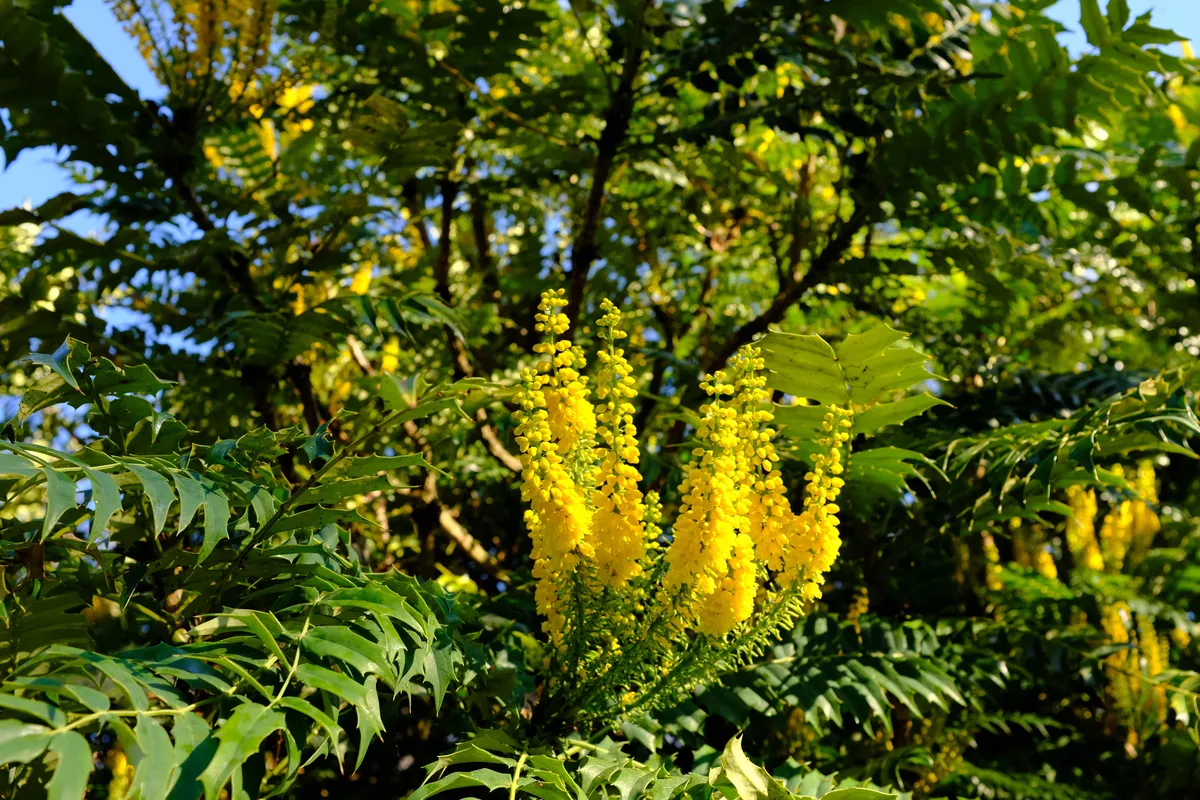
Mahonias are large and architectural evergreen shrubs that bear fragrant yellow flowers from November to February, when little else is in flower. They are very useful for early flying bumblebees, which gather pollen from the flowers. The flowers are followed by purple-black berries, which are popular with birds. Mahonias are low maintenance and easy to grow and are excellent for tricky shady spots in the garden. Mahonia aquifolium 'Apollo', Mahonia x media 'Charity' and the new Mahonia 'Soft Caress' which is compact with bamboo-like leaves, are all good choices.
Iris reticulata

Iris reticulata is one of the earliest flowers to appear in the year, popping up in late winter and early spring. They are perfect for growing in pots, which means that they are suitable for a garden of any size. You may even find bumblebees taking shelter within the flower. Plant the bulbs in autumn.
Winter aconite
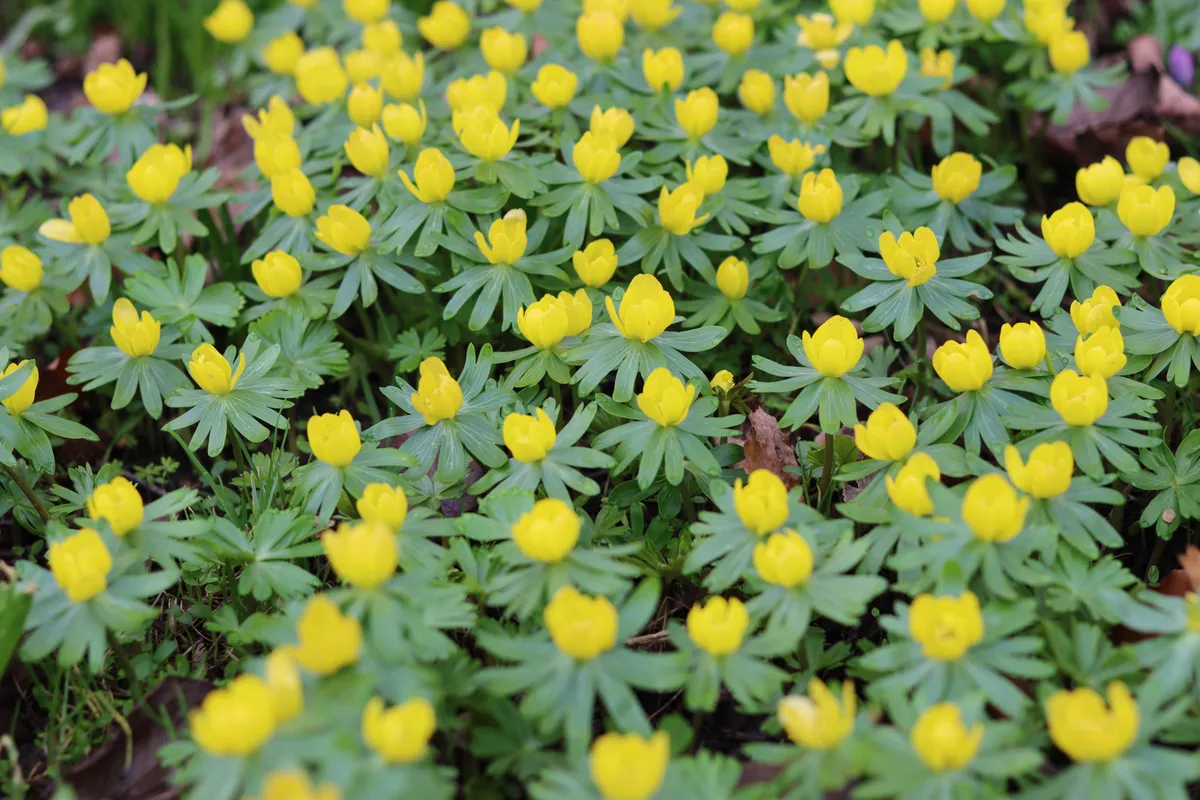
The sunny, egg-yolk-yellow flowers of winter aconites (Eranthis) are a welcome sight in late winter and look great paired with drifts of snowdrops. They provide pollen and nectar for early foraging bees. Grow from bulbs planted in autumn or plant in the green in spring; they should spread in a partially shaded spot under trees and shrubs.
Winter-flowering clematis
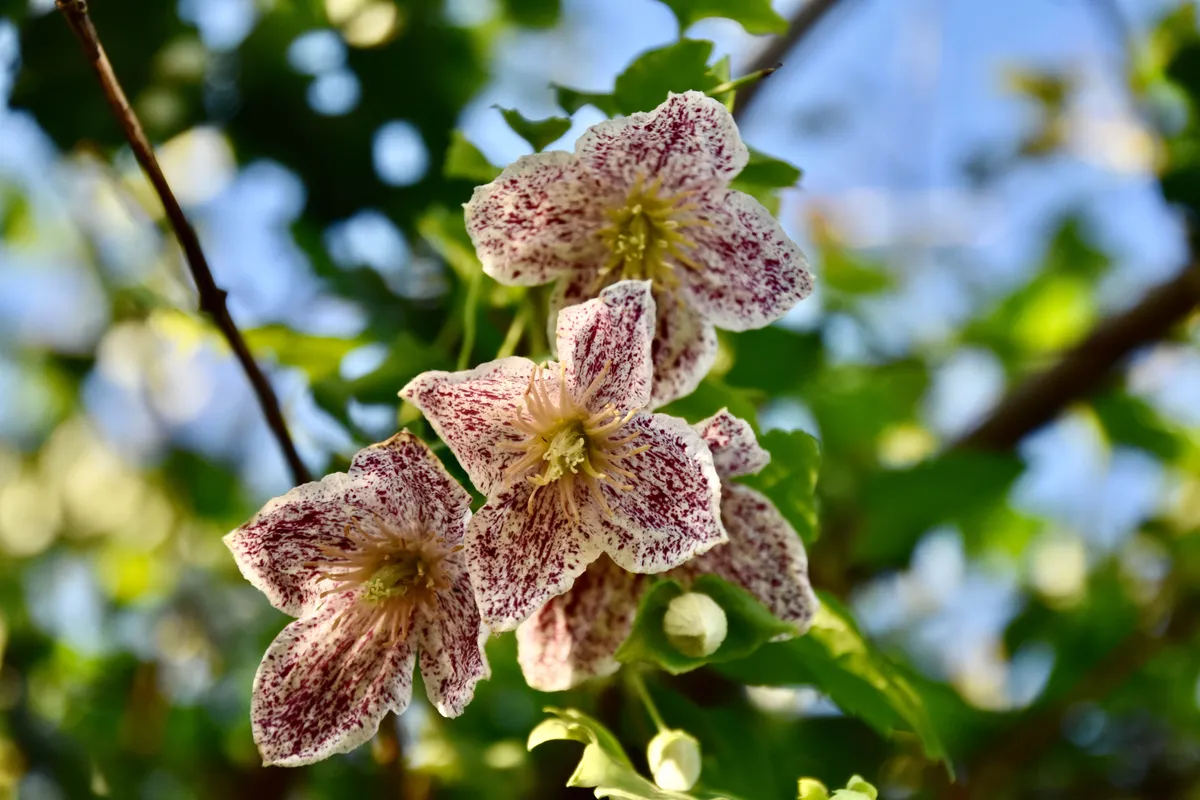
Clematis are best known for their big, blousy flowers in summer, but there are that flower during the winter and early spring. They are mostly evergreen or semi-evergreen. Winter-flowering clematis are a lovely way of bringing welcome flowers to your garden in winter and to support bees early in the year, too. Clematis cirrhosa var. purpurascens 'Freckles' is an evergreen clematis that has creamy and scented bell-like flowers that are freckled with burgundy spots inside. It does not need regular pruning. Grow these beautiful climbing plants up an arch, fence or pergola.
Winter honeysuckle
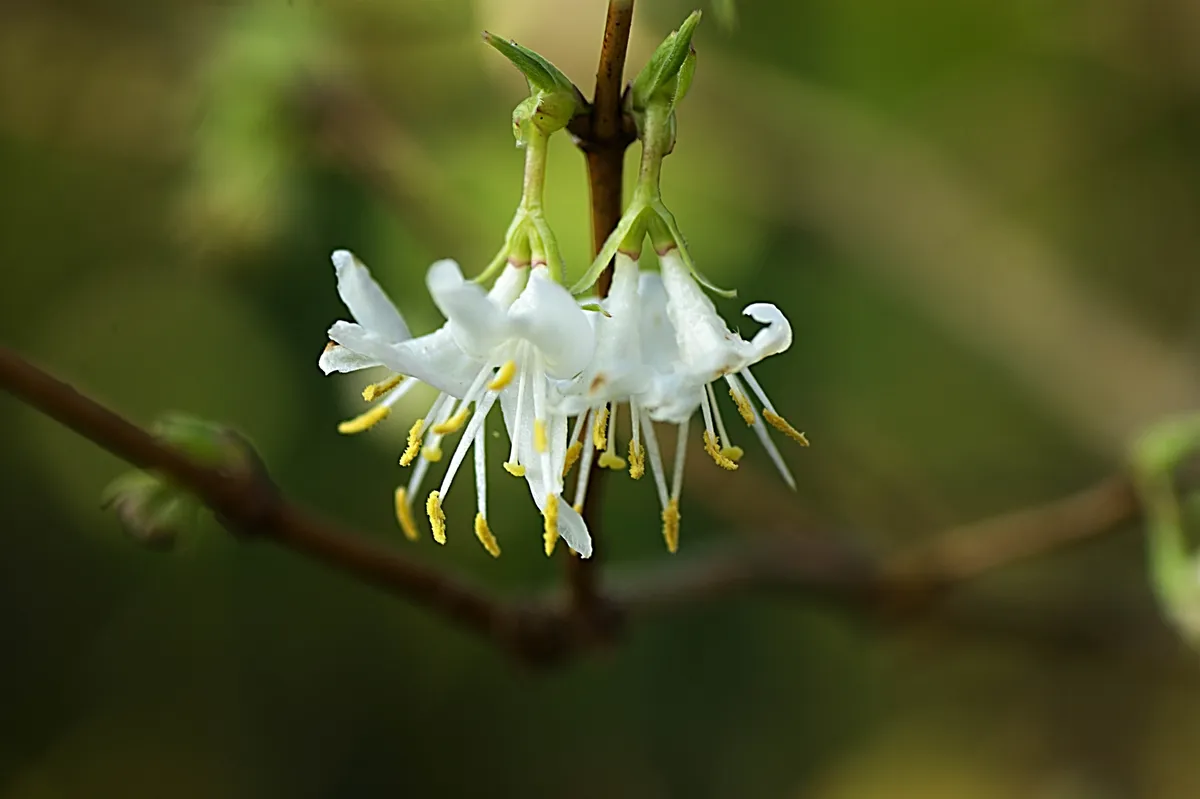
Like many winter-flowering plants, winter-flowering honeysuckles such as Lonicera fragrantissima are often highly fragrant, making them a delightful addition to your garden - as well as providing sustenance for bumblebees that may have emerged early.
Heather (Erica carnea)
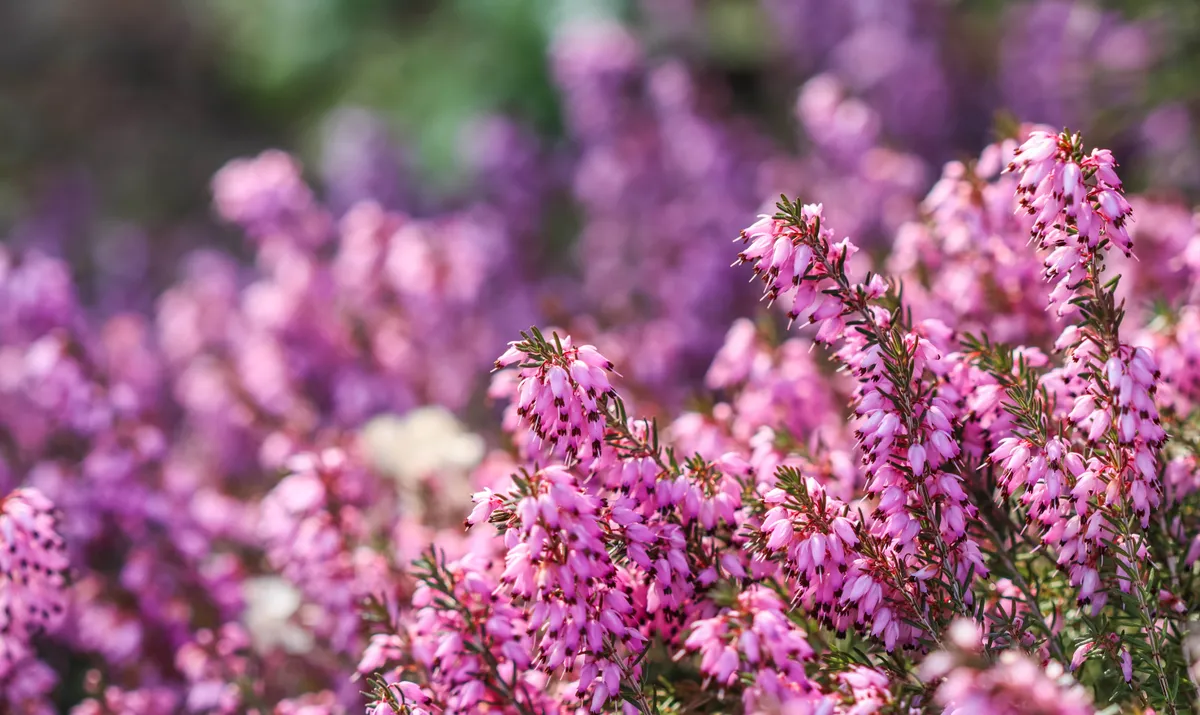
The early spring-flowering heathers, Erica carnea, often flower as early as February and are particularly popular with early-emerging queen bumblebees and honeybees.
Best flowers for bees in spring
Hellebores
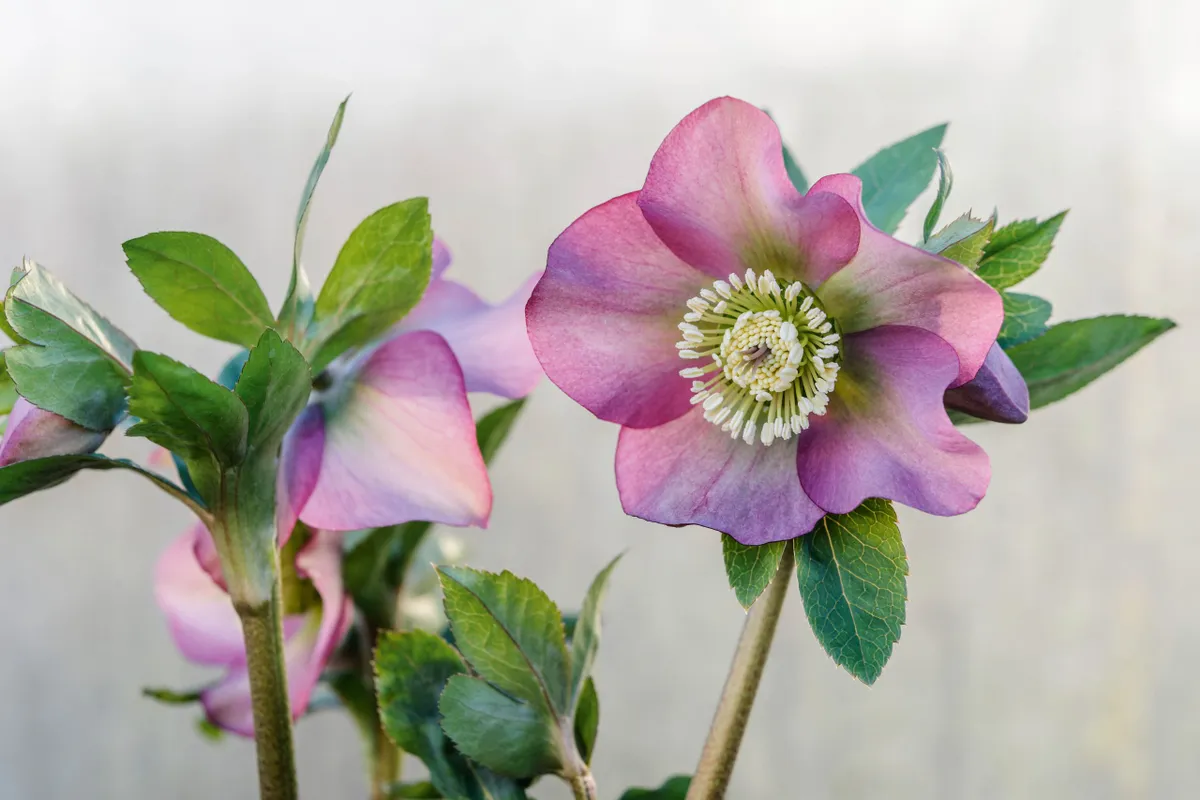
Hellebores flower for months on end, from early spring until May, so are extremely valuable plants to have in your garden. Hellebore flowers are rich in nectar and pollen, at a time of year when these are often scarce, giving much needed sustenance to early emerging bumblebees. The nodding flowers protect the pollen from rain, as well as the insect feeding on it. Read our expert guide to growing hellebores.
Crocus

Crocuses bring welcome pops of colour to the garden in late winter and early spring, and provide welcome pollen for early bumblebees. They also provide shelter during the night - the petals close as night falls around resting bees. Plant the bulbs in autumn, in pots, grass or borders. Read our guide to growing crocus.
Willow

In early spring, the male catkins of willow offer valuable early pollen and some nectar, while the females exclusively offer nectar. There are many types of willow available, including compact varieties suitable for smaller gardens.
Grape hyacinth
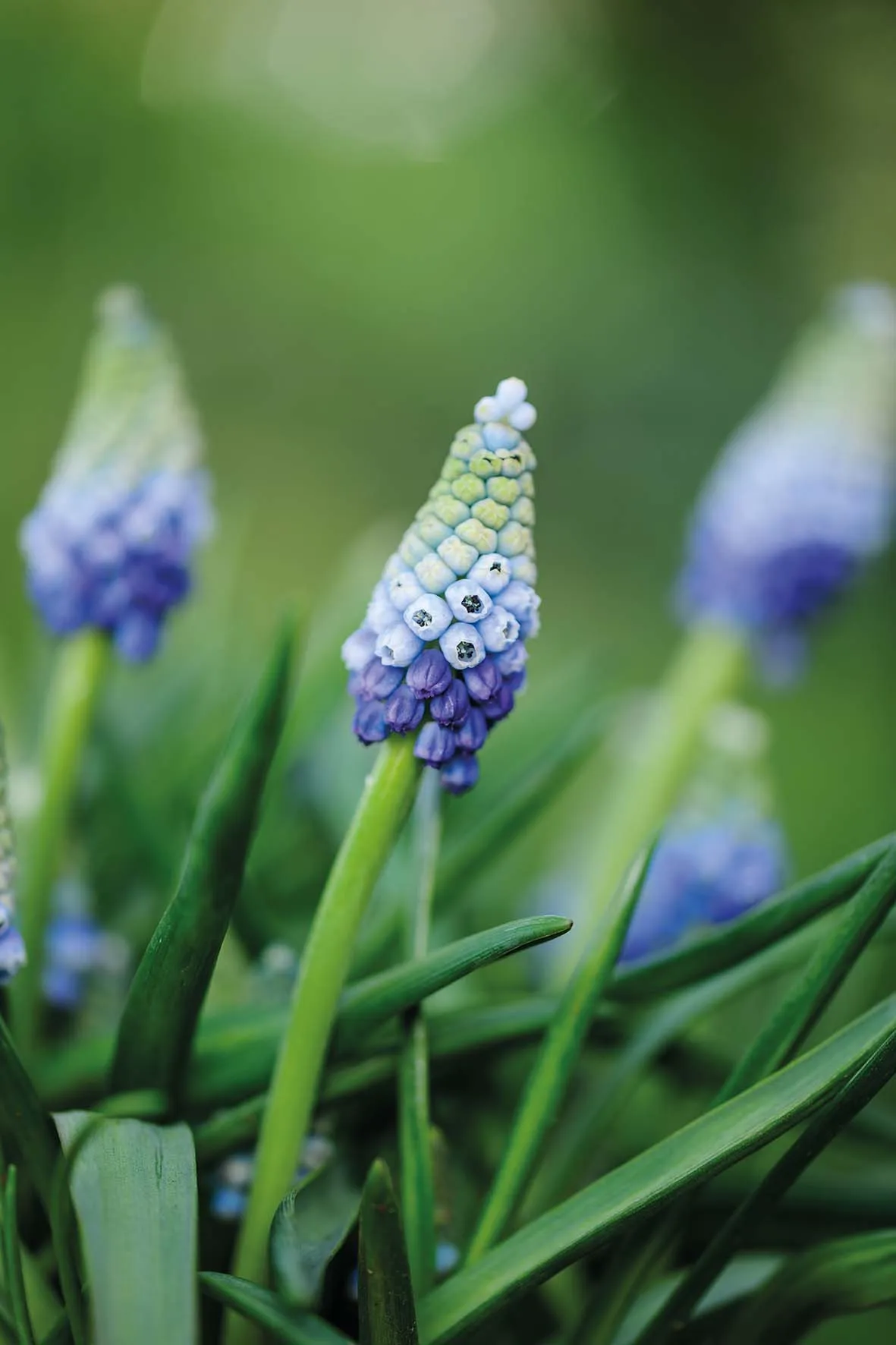
Grape hyacinths (Muscari) are magnets for bees in early spring. Grow them in pots or naturalised in grass; plant the bulbs in autumn. Deadhead if you don't want them to multiply. The big flowers of their larger cousins, hyacinths, can also provide shelter for bumblebees during inclement weather.
Euphorbia palustris
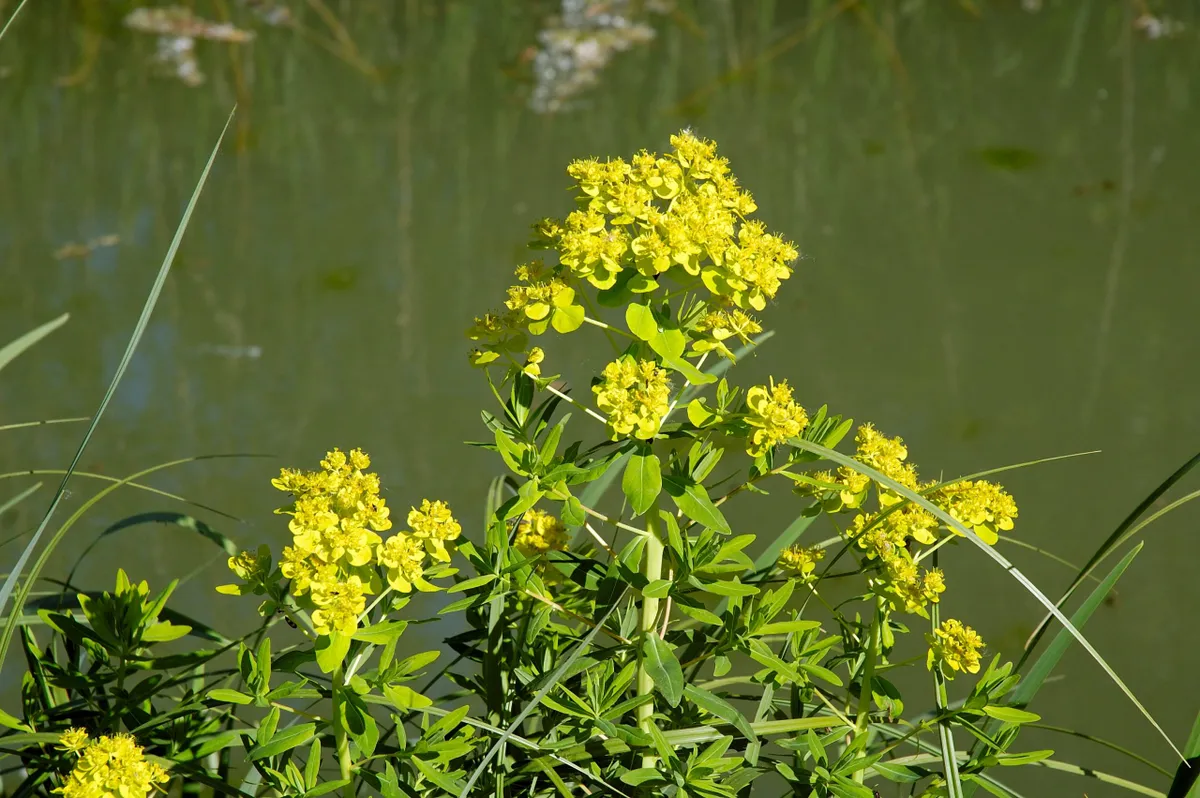
The acid yellow flowers of this euphorbia provide nectar and pollen for bees. It has lovely bright-green leaves and will tolerate heavier soils better than most other euphorbias. Read our guide to growing euphorbias.
Rosemary

Rosemary hums with all kinds of bees in spring, including mason bees, flower bees, bumblebees and honeybees. This evergreen shrub has scented foliage and a wide range of uses in the kitchen; the prostrate varieties will spill over the edge of a wall or raised bed. Rosemary used to be called Rosmarinus officinalis but is now called Salvia rosmarinus.
Primrose

Primroses (Primula vulgaris) flower from March to May and provide early nectar for worker bees, hairy-footed flower bees and early bumblebees. Grow them in a shady spot, under trees or shrubs, or in pots on the patio.
Pulmonaria

Pulmonarias (lungworts) produce clusters of nectar-rich blue, pink or white flowers in early spring that are especially attractive to hungry queen bumblebees and long-tongued bees such as the hairy footed flower bee. They do well in semi-shade and have attractive marbled foliage. Best at the front of the border, they make excellent ground cover. Read our guide to growing pulmonaria.
Fruit trees and bushes
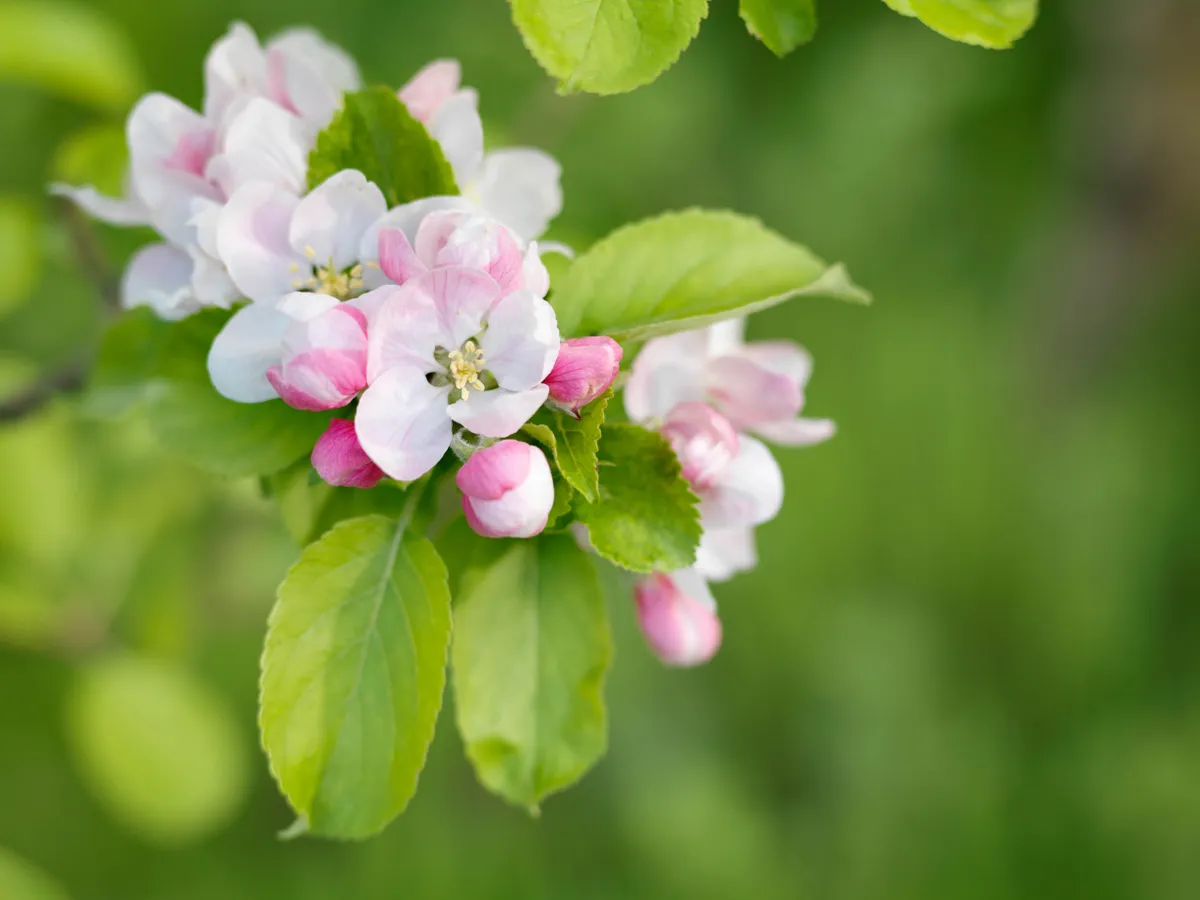
The spring flowers of fruit trees provide an early source of nectar and pollen for bees, and once pollinated, the flowers turn into fruits. There is a fruit tree to suit every garden – in a small space you can grow them as cordons, stepovers and standards. Crab apples are smothered in flowers, so are a particularly good choice. Fruits that grow on bushes or canes, including raspberries, gooseberries, blackcurrants and blackberries will also be busy with bees in spring. Discover 18 of the best cherry trees.
Bluebells
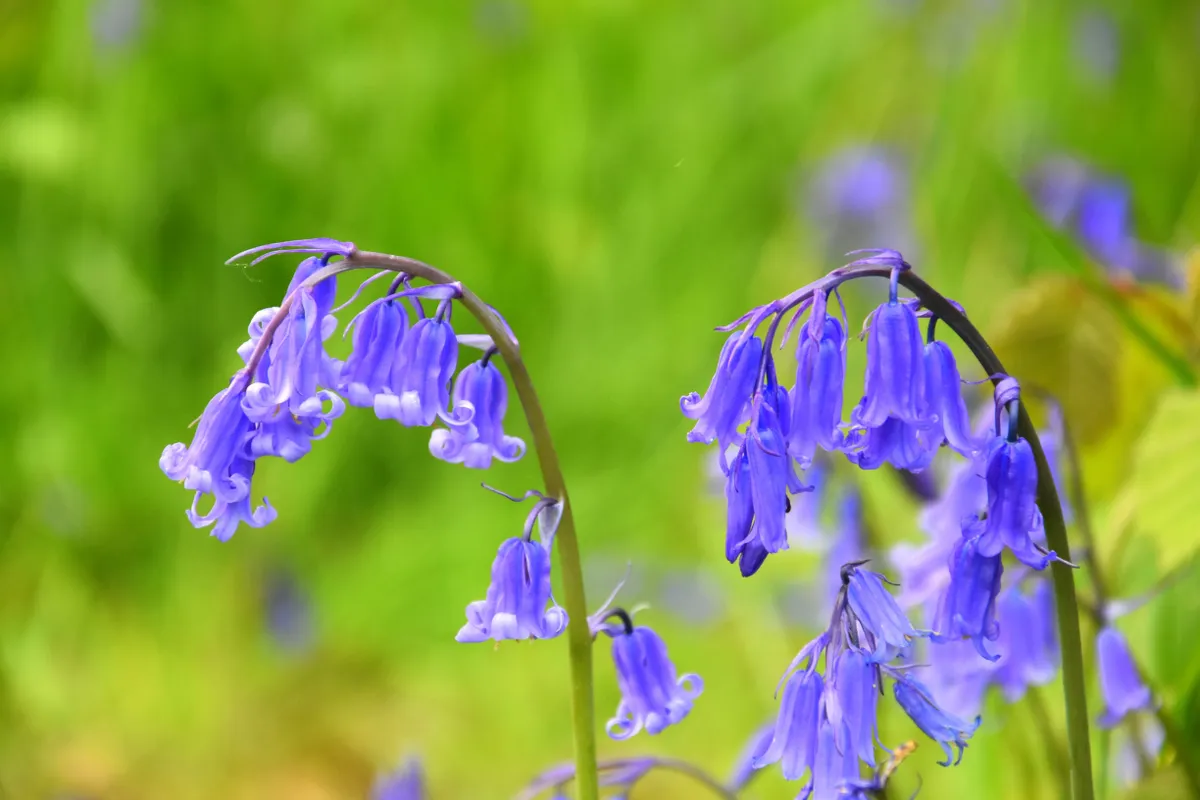
Swathes of English bluebells are a lovely sight in spring. Bluebells are an good spring bulbs for pollinators, including bees. They can ‘steal’ the nectar by biting a hole in the bottom of the flower. Find out all you need to know about growing bluebells, including the difference between English and Spanish bluebells.
Alliums
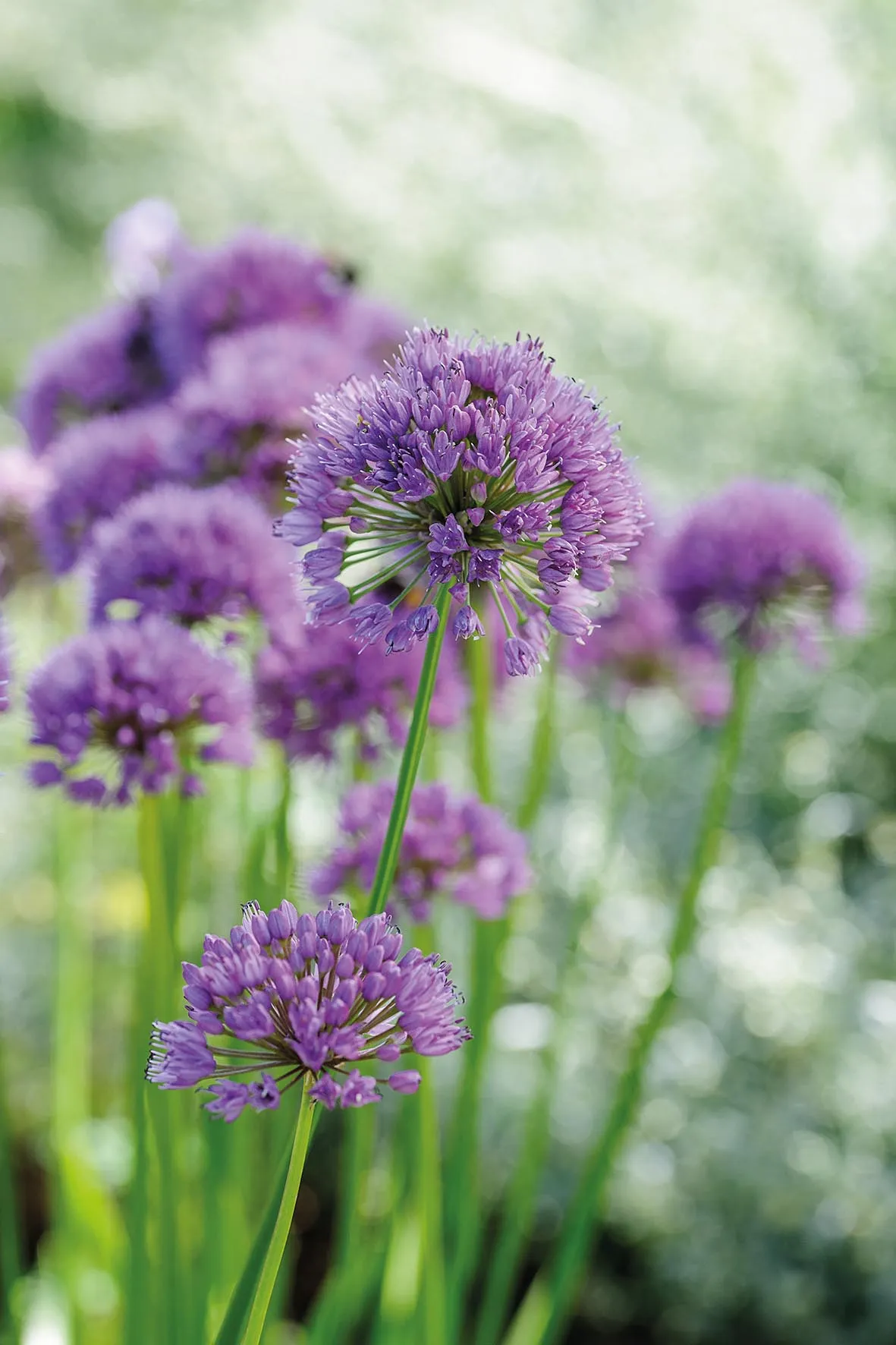
With their globe-shaped flowers, alliums are popular with both honeybees and bumblebees and bring height and drama to a sunny border. Sicilian honey garlic literally drips with nectar. Plant allium bulbs in autumn; they will come back year after year. The allium family also includes chives, which are also extremely popular with bees.
Wisteria
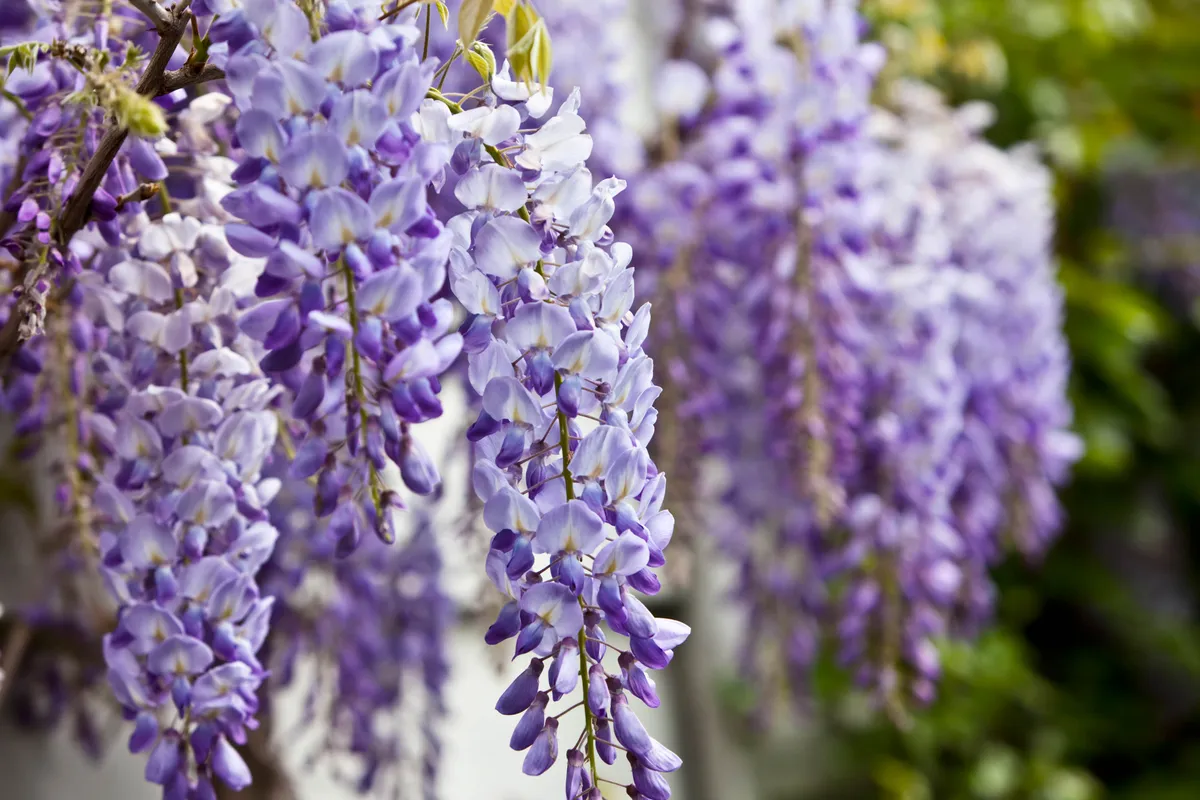
Wisterias are a stunning sight in late spring and have the added bonus of offering masses of pollen for bees. Read our guide to growing wisteria.
Wallflower

Wallflowers (Erysimum) bridge the gap between spring and summer and are loved by bees. Erysimum 'Bowles's Mauve' (pictured) flowers almost all year round, and its nectar is invaluable for bees at times when other flowers are scarce.
Aquilegia
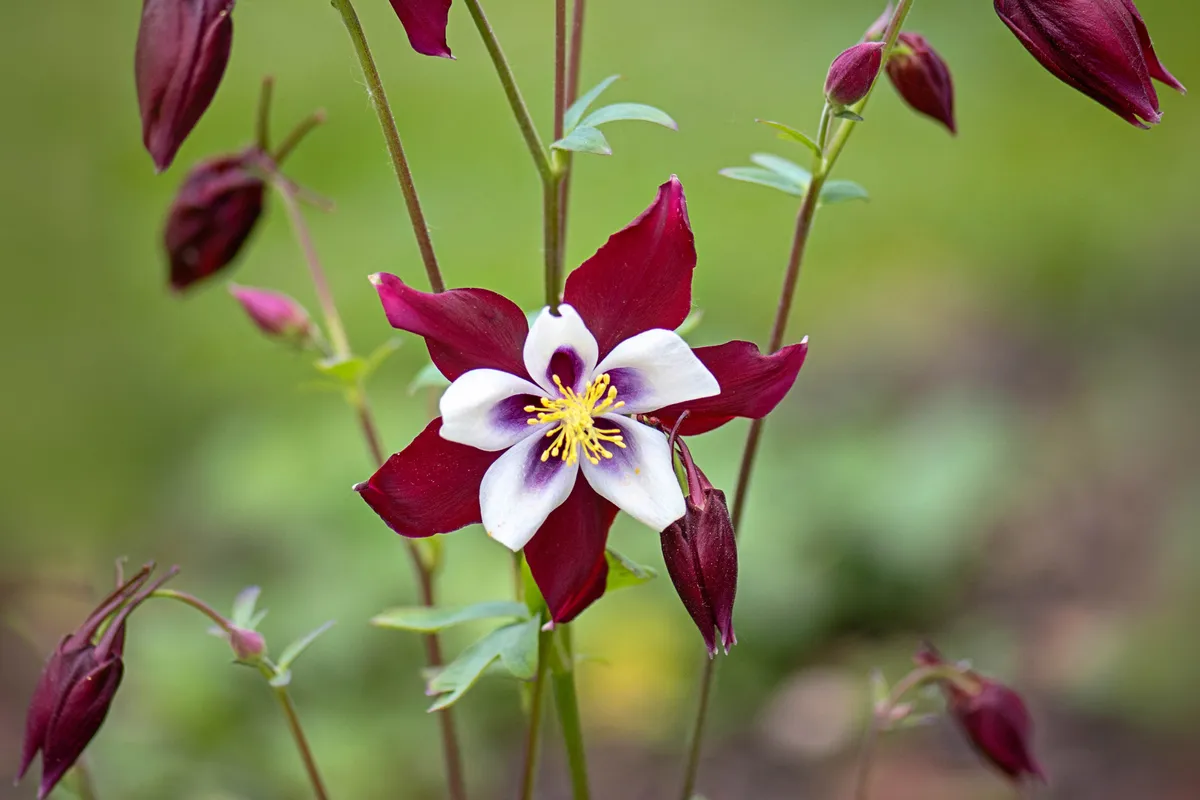
The long flowers of aquilegia (Granny's bonnet) are visited by long-tongued bees - but also 'robbed' by short-tongued bees. These cottage garden favourites self seed freely around the garden.
Best flowers for bees in summer
Hardy geranium
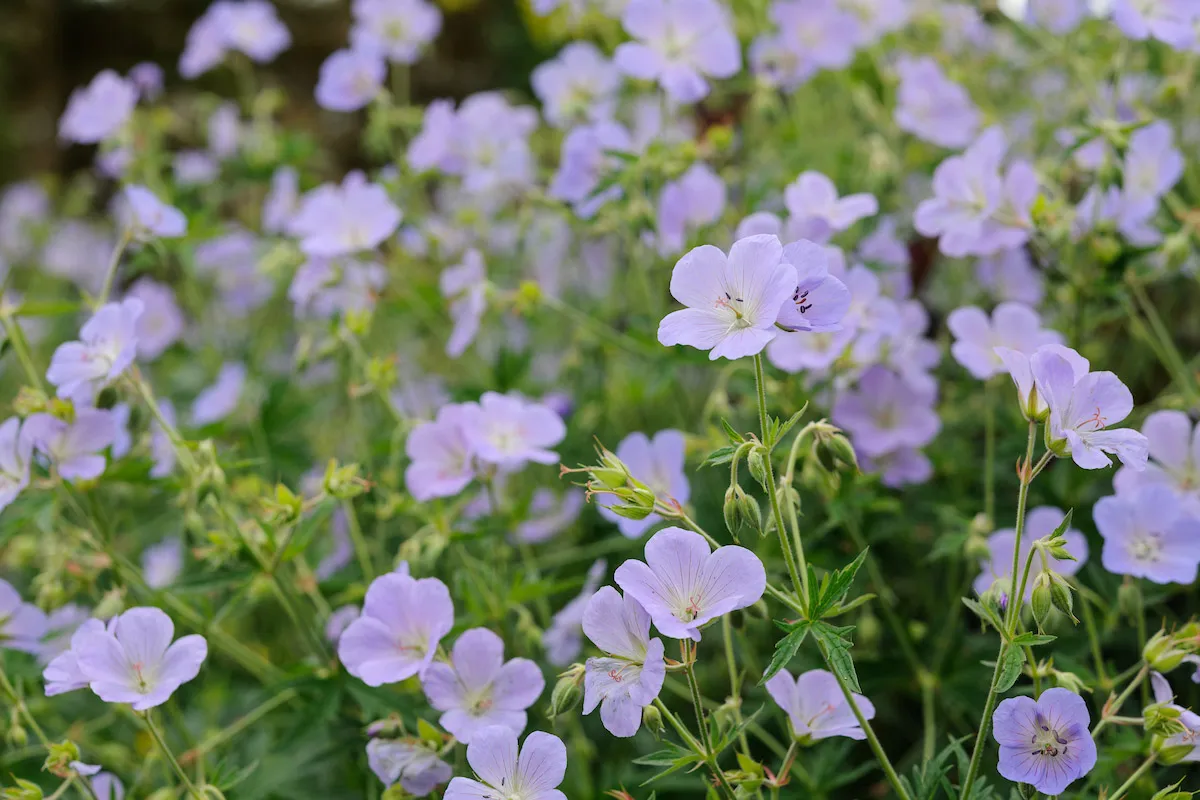
Hardy geraniums are attractive to short-tongued bees. They make excellent ground cover. Cut back geraniums in July (known as the Hampton Hack) and they will often flower again. Read about the best hardy geraniums.
Knapweed
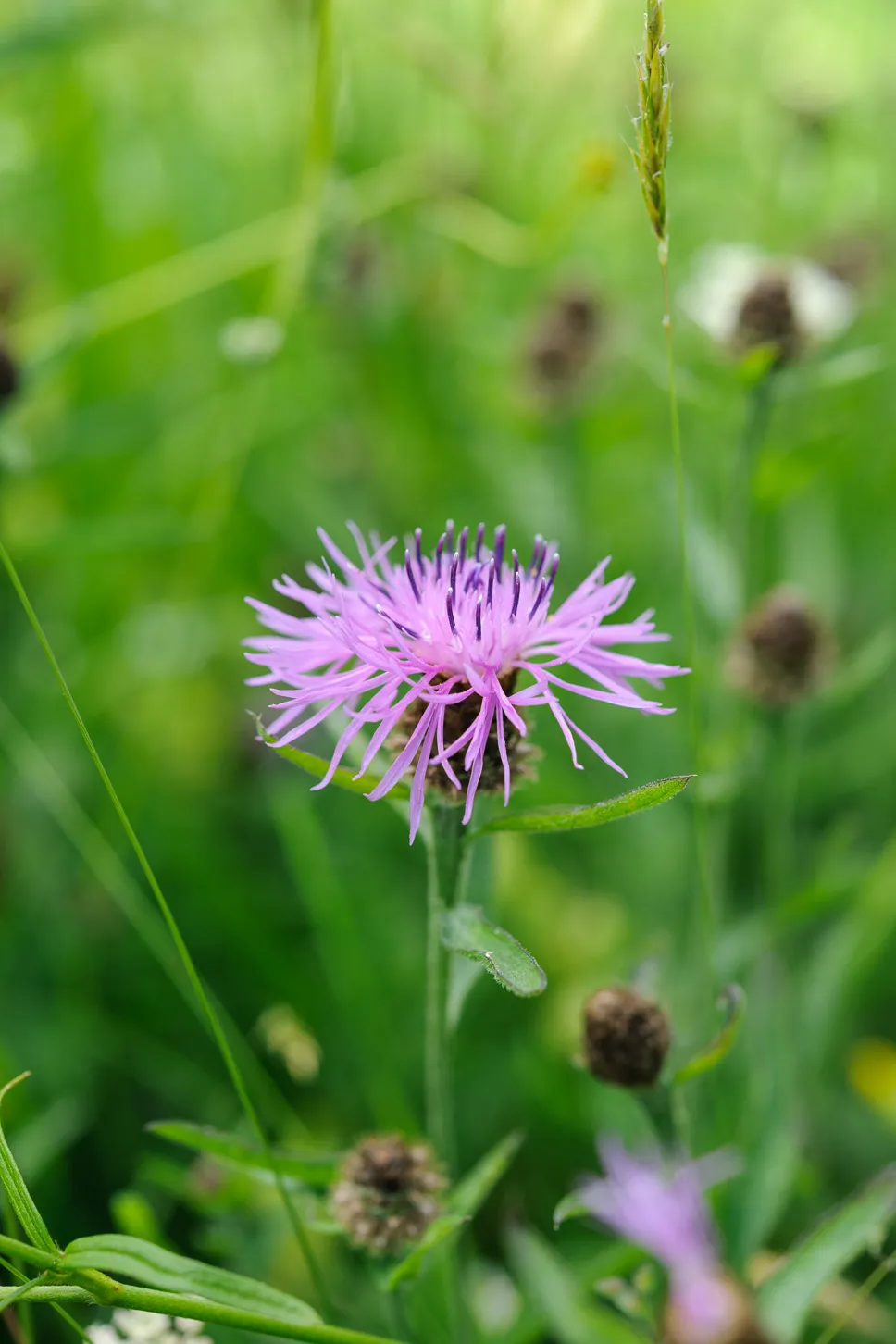
A native plant, common knapweed is easy to grow in borders as well as meadows and provides pollen and nectar for a wide range of foraging insects including bees (especially male bumblebees), butterflies and moths. Forms vary considerably and some, such as Centaurea nigra, are particularly garden-worthy. Here's how to grow centaurea.
Snapdragon

The lipped, trumpet-like flowers of snapdragons are popular long-tongued bumblebees such as Bombus hortorum. Snapdragons are usually grown as annuals but are in fact shortlived perennials, so often survive through to the following year. They make excellent cut flowers.
Geums
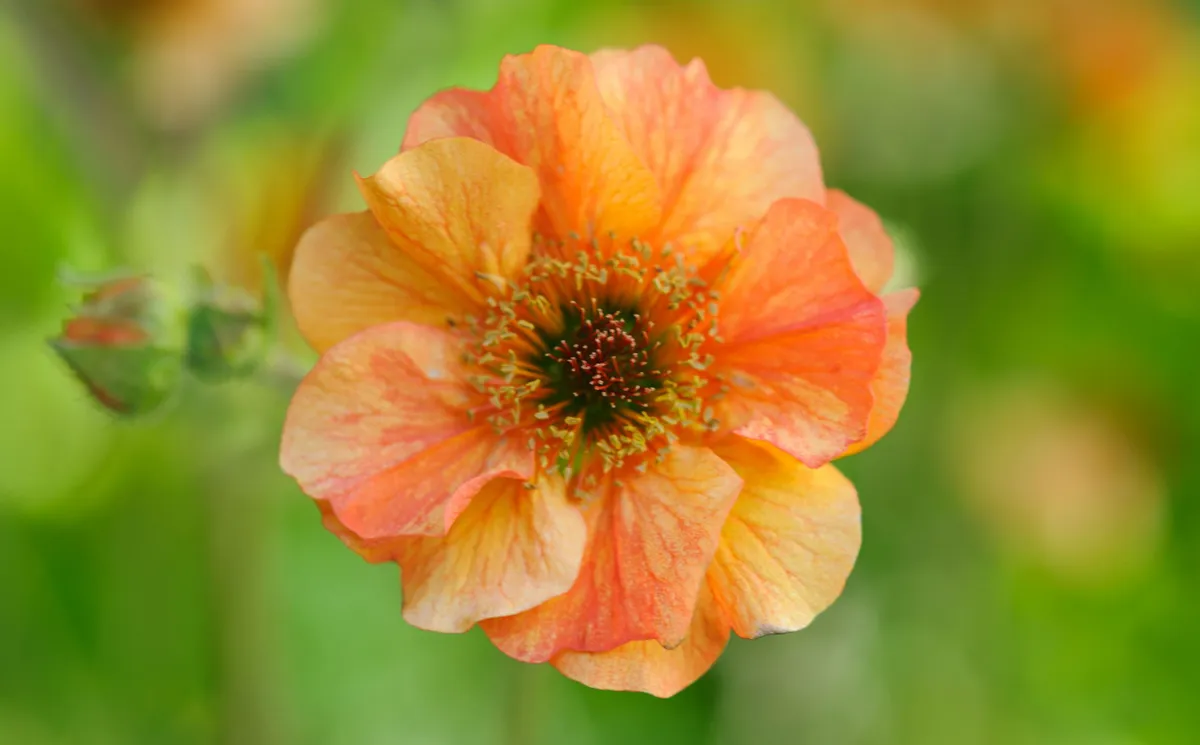
Geums start flowering in late spring and continue well into summer, and are a good nectar source for bees. They come in a range of colours, including red, orange and yellow. Read our expert guide to growing geums.
Single roses
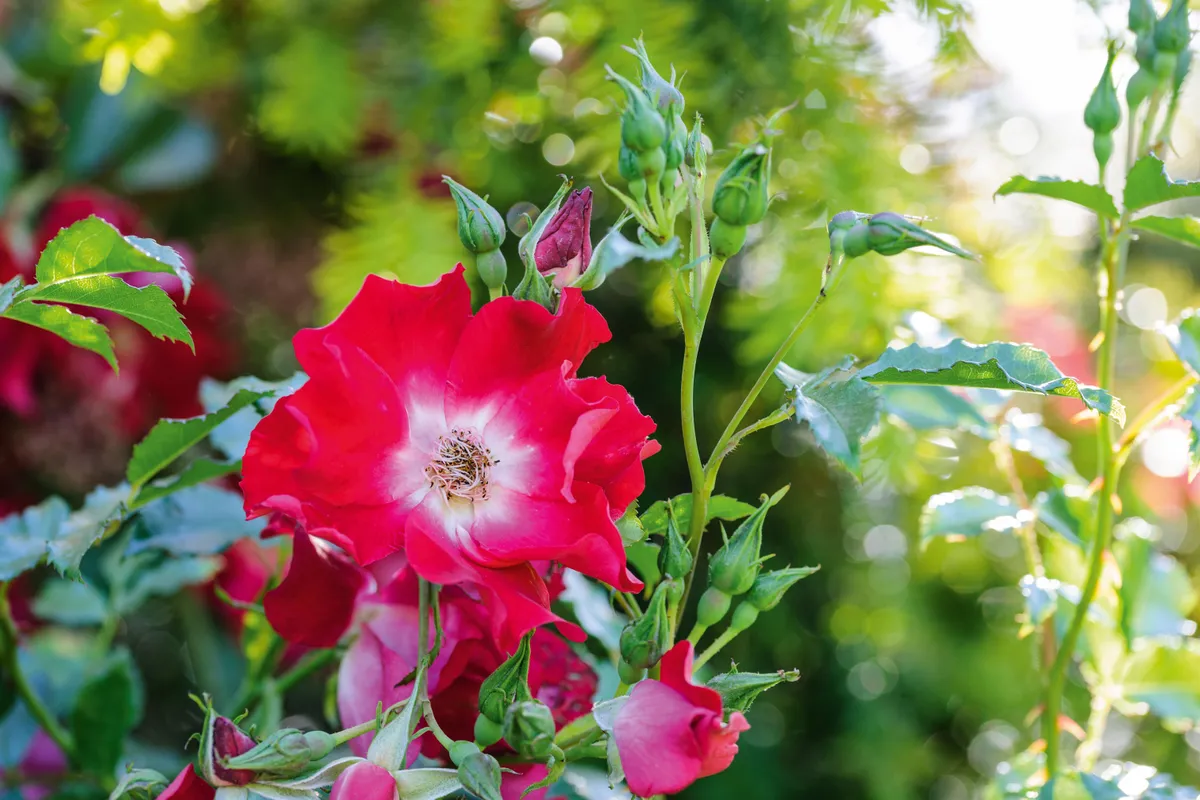
Single-flowered roses are more attractive to bees and other pollinating insects than the double forms, where the nectar and pollen – if available – can be difficult for insects to access. The flowers don't need deadheading ad are followed by huge hips which can nourish birds and small mammals. The single, fragrant flowers of Rosa rugosa offer a mass of easily accessible pollen and nectar and are among the healthiest and easiest roses to grow. Discover the best single-flowered roses to grow.
Foxgloves

Foxgloves are magnets for bees, especially long-tongued bees like the common carder bee and the garden bumblebee, Bombus hortorum. Foxgloves flower from the bottom of the flower spike upwards, over a period of three or four weeks. Once you have foxgloves in your garden, you will never be without them, as they self seed freely. Discover the best foxgloves to grow.
Honeywort

Honeywort, or Cerinthe purpurescens is a magnet for bumblebees and solitary bees thanks to its nectar-rich flowers. It's easy to grow from seed and makes a good cut flower.
Honeysuckle
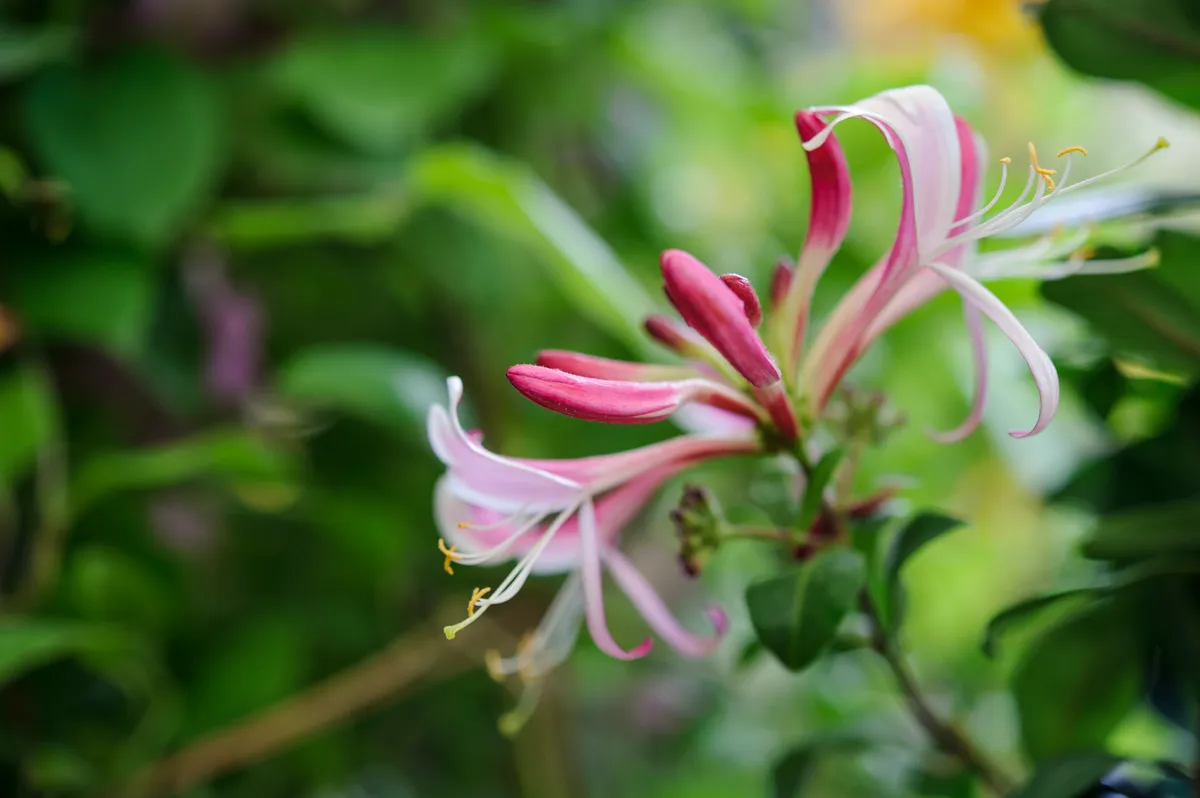
Lonicera periclymenum 'Serotina' is known as the late Dutch honeysuckle, because it continues flowering longer than other cultivars, usually into October. The highly perfumed flowers are a deep reddish-purple on the outside and yellow within. Here's everything you need to know about growing honeysuckle.
Catmint

Catmint (Nepeta) is a magnet for bees, especially bumblebees - and it flowers from early summer into autumn. Grow it at the front of the border, where it will spill over the edge. As it's name suggests, it's also attractive to cats.
Buddleia
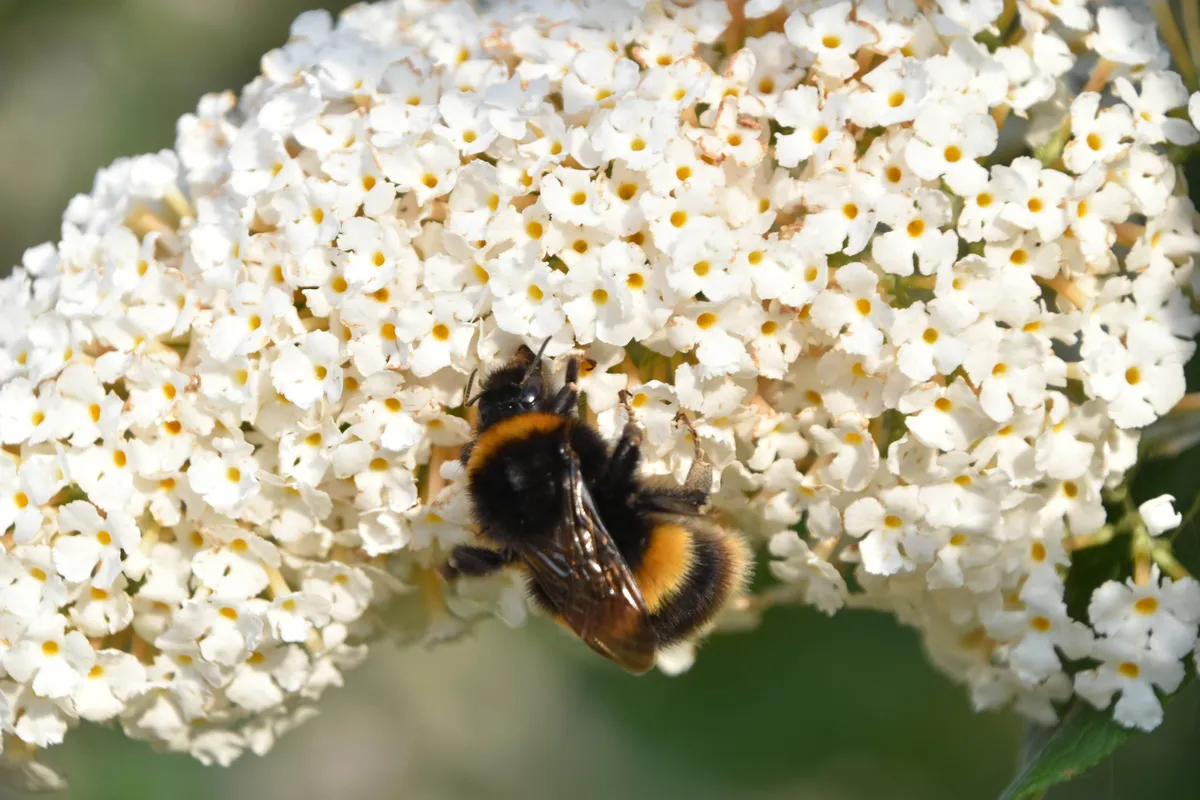
Known as the butterfly bush, as it's an excellent nectar source for butterflies, buddleias are also popular with bumblebees. Dwarf varieties can be grown in pots. Read our guide to pruning buddleia.
Marjoram (oregano)
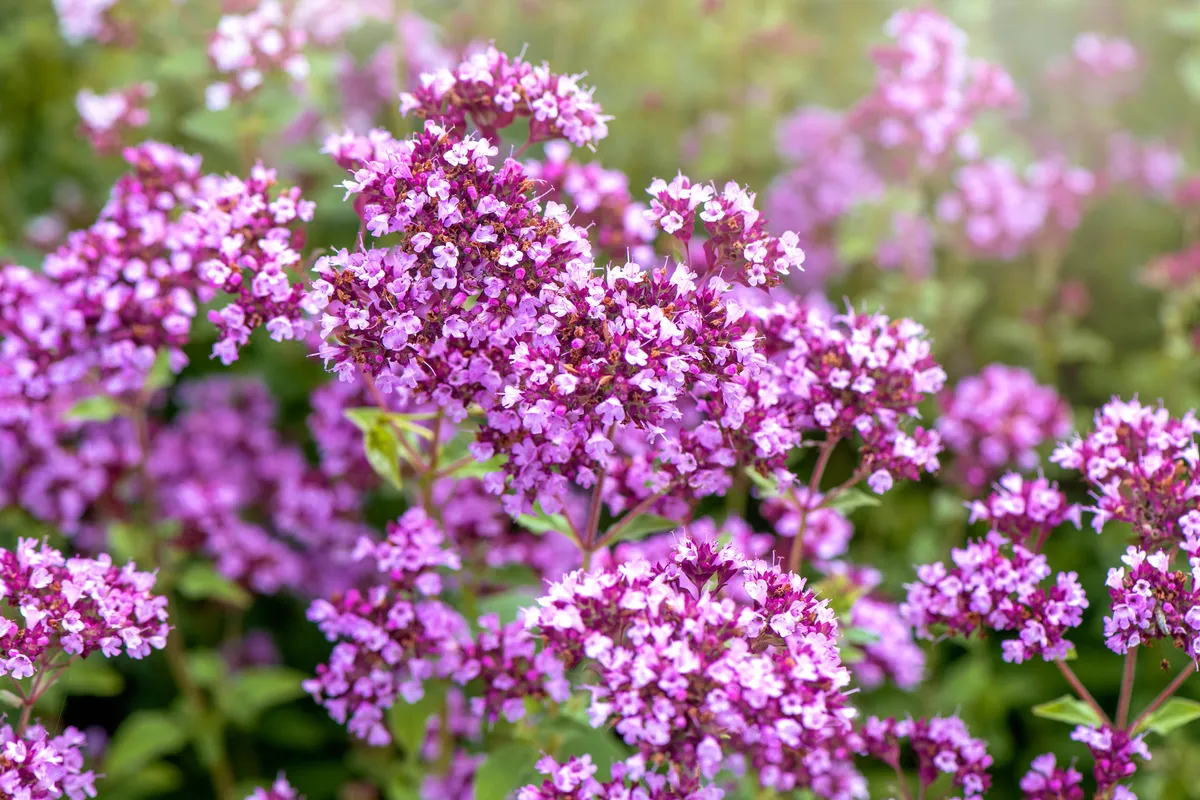
If you let this culinary herb flower, it will provide oodles of nectar and pollen for bees and attracts other pollinators, too. Grow in a sunny spot, in well drained soil.
Monarda (bee balm)
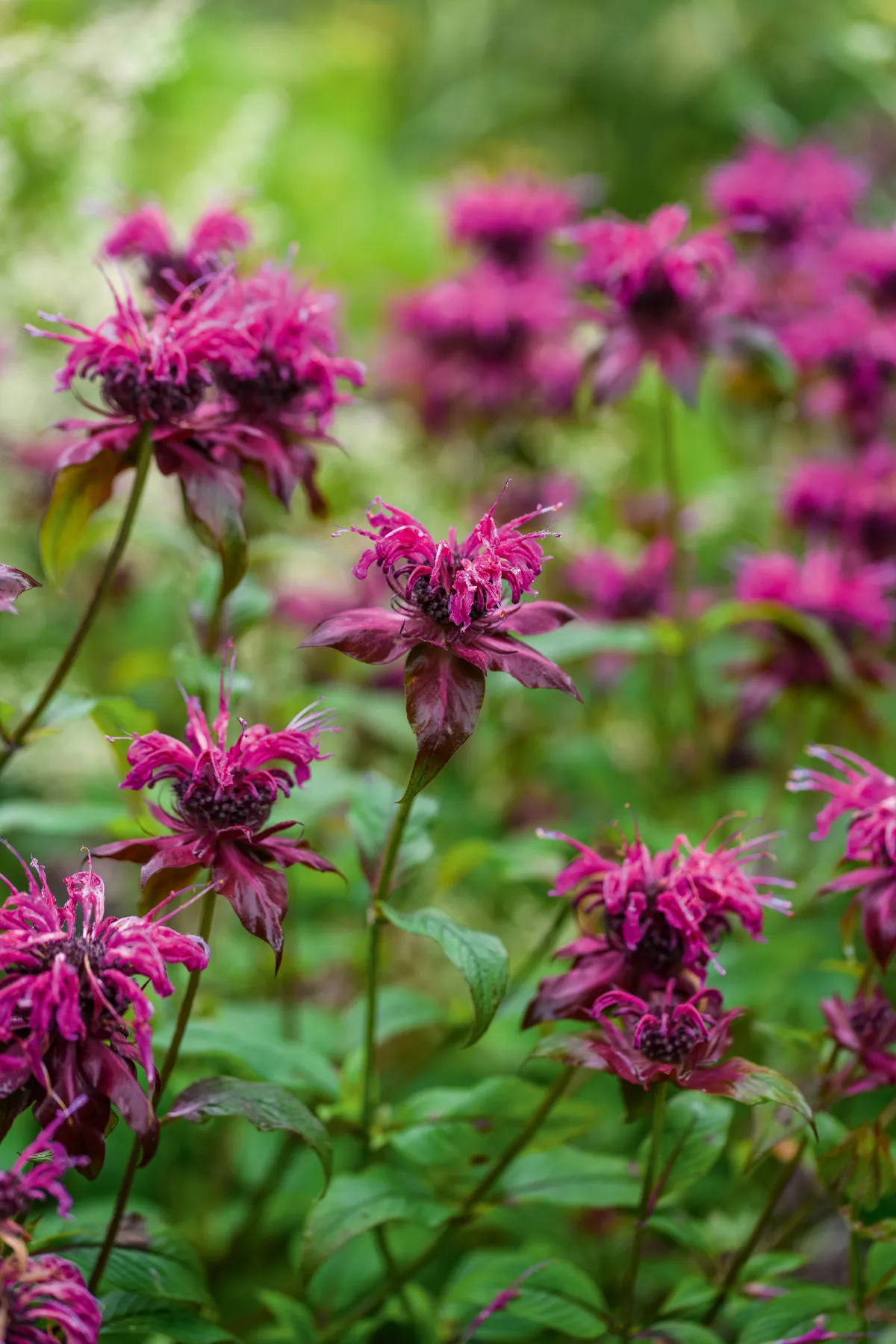
A member of the mint family, monarda is also known as bergamot or bee balm and is very attractive to both bees and butterflies. The red, pink or purple flowers look good in a cottage garden scheme or prairie planting.
Globe artichoke
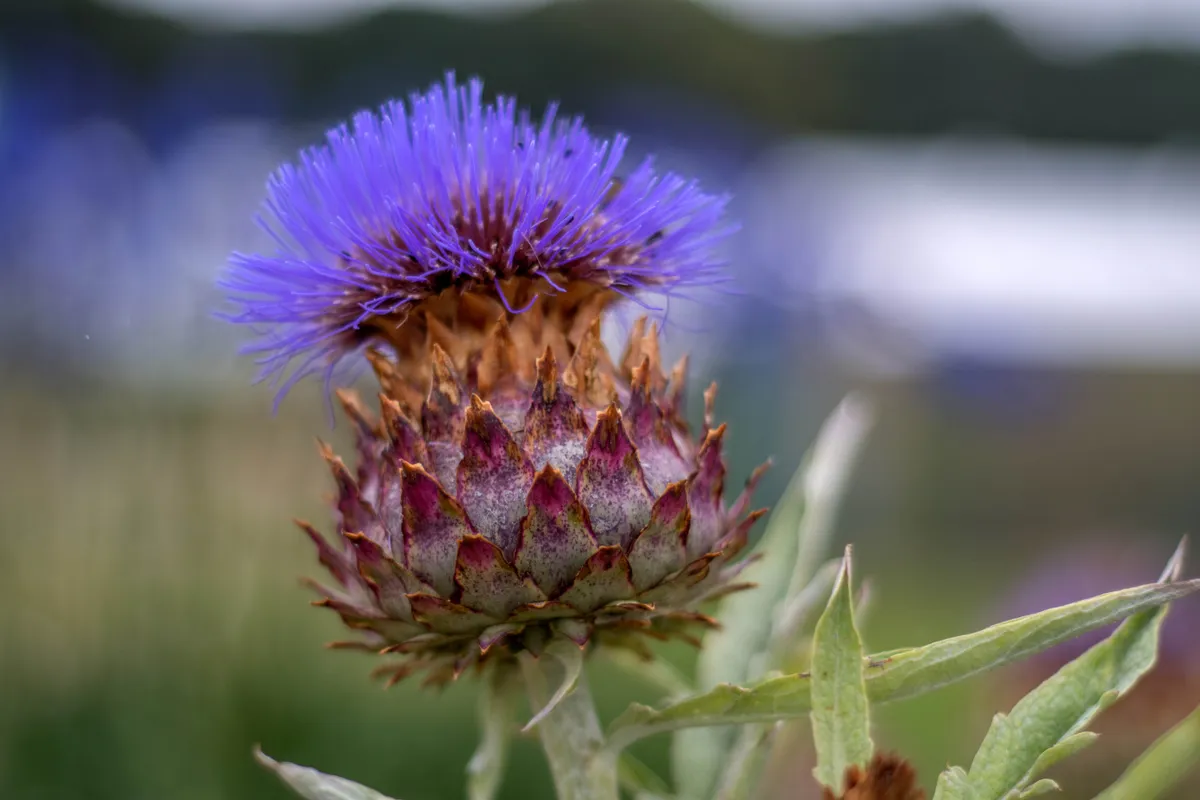
Globe artichokes (Cynara scolymus) are grown for their edible flower buds. Unharvested, they open into large purple thistle-like flowers, much loved by bees, including male bumblebees, and other pollinating insects. Close relatives, cardoons, are also very popular with bees.
Phacelia
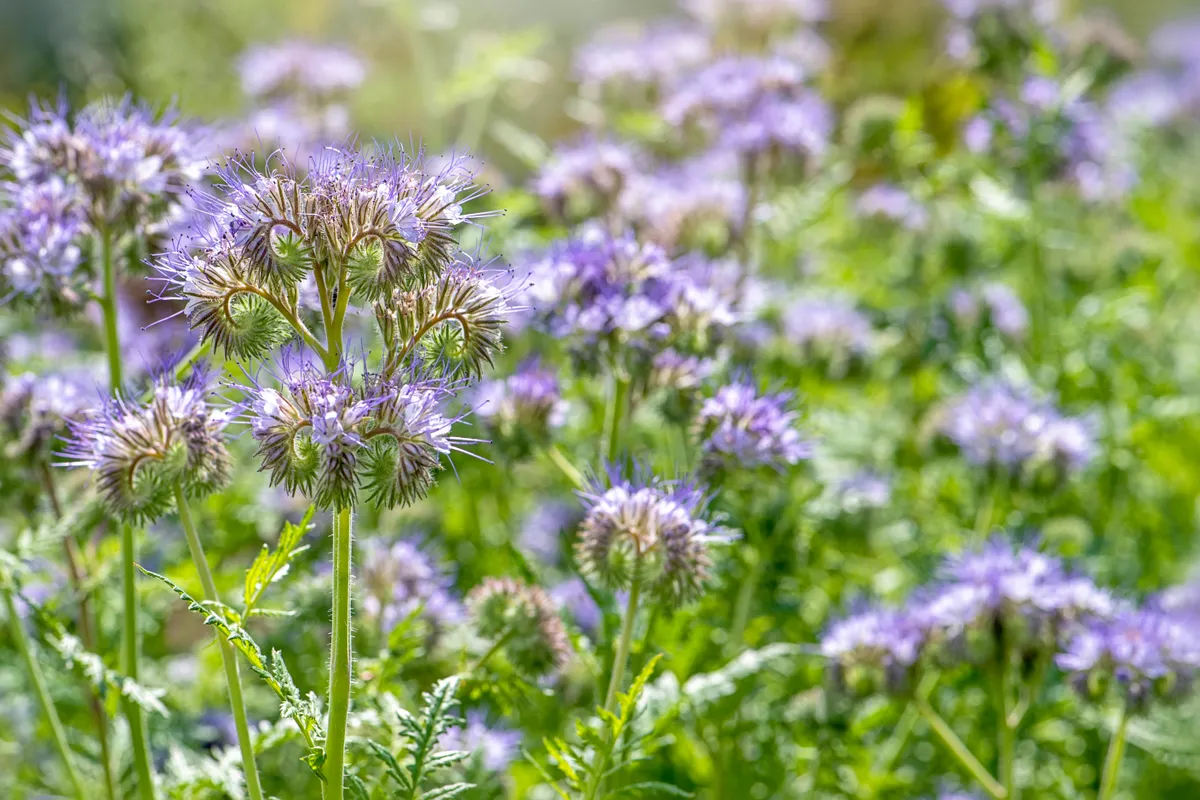
Phacelia is extremely rich in nectar, which explains why it's incredibly popular with bees. This annual is easy to grow from seed and can be grown as a green manure.
Hebe
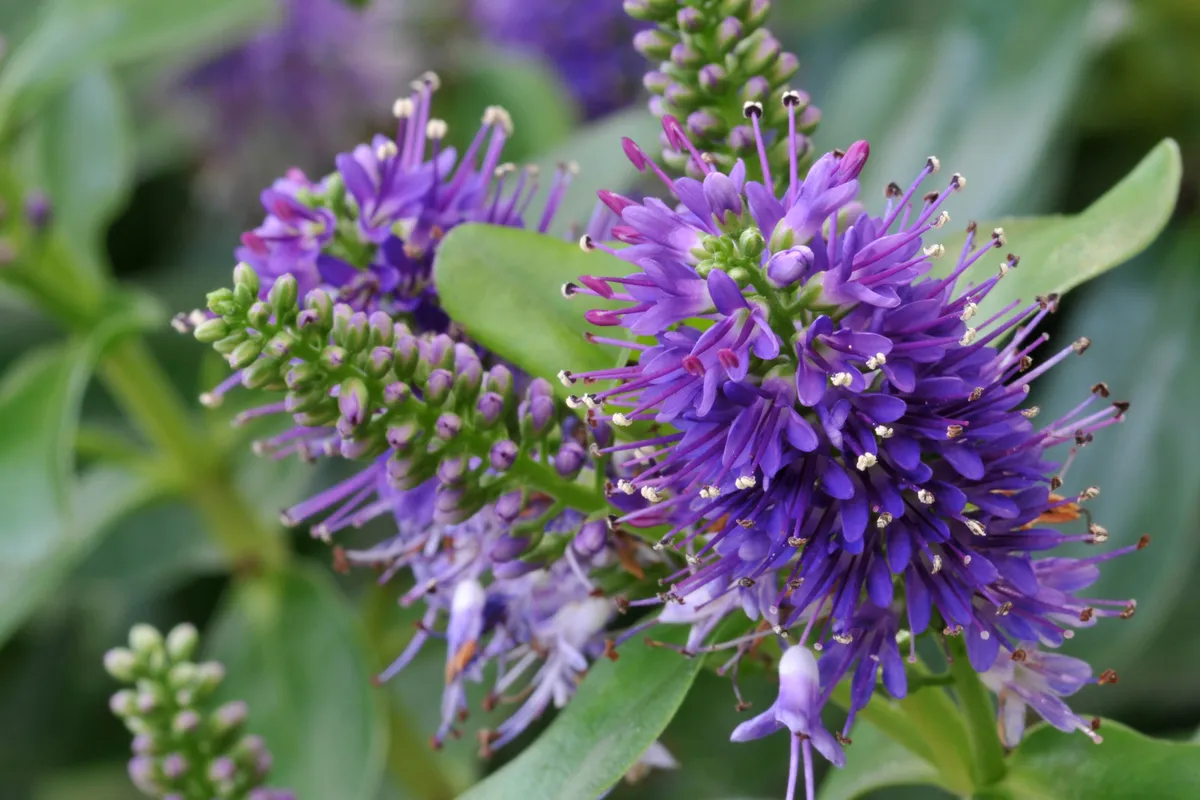
Hebes are evergreen, long-flowering shrubs that flower from midsummer to mid autumn, so provide nectar and pollen for bees over a long period. Discover more about growing hebes.
Poppy
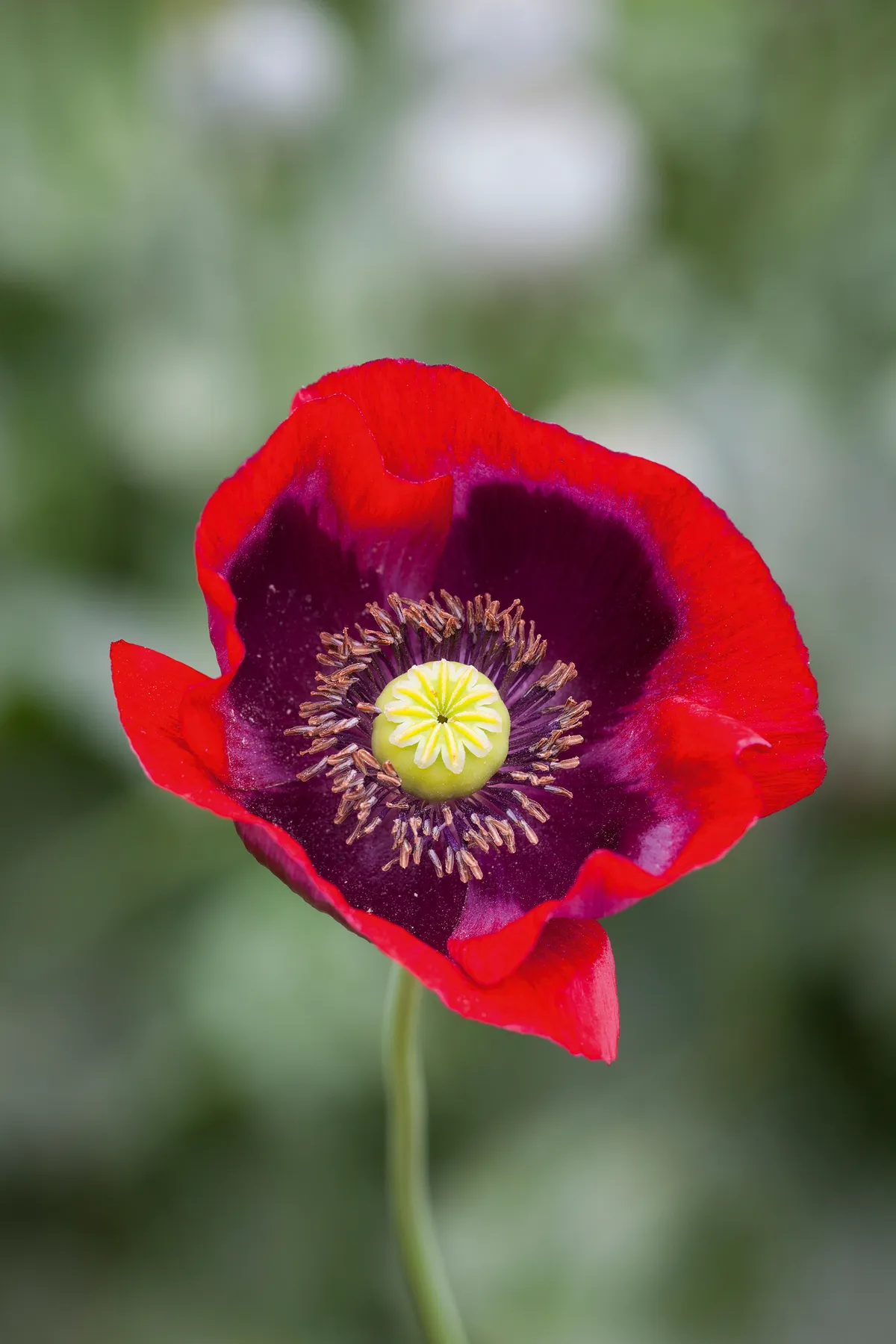
You may notice more than one bee at a time in your flowers of Papaver somniferum (opium poppy, which will self seed around your garden) and Papaver orientale – they are seeking the abundant pollen. They are perfect for a cottage garden or herbaceous border.
Veronicastrum
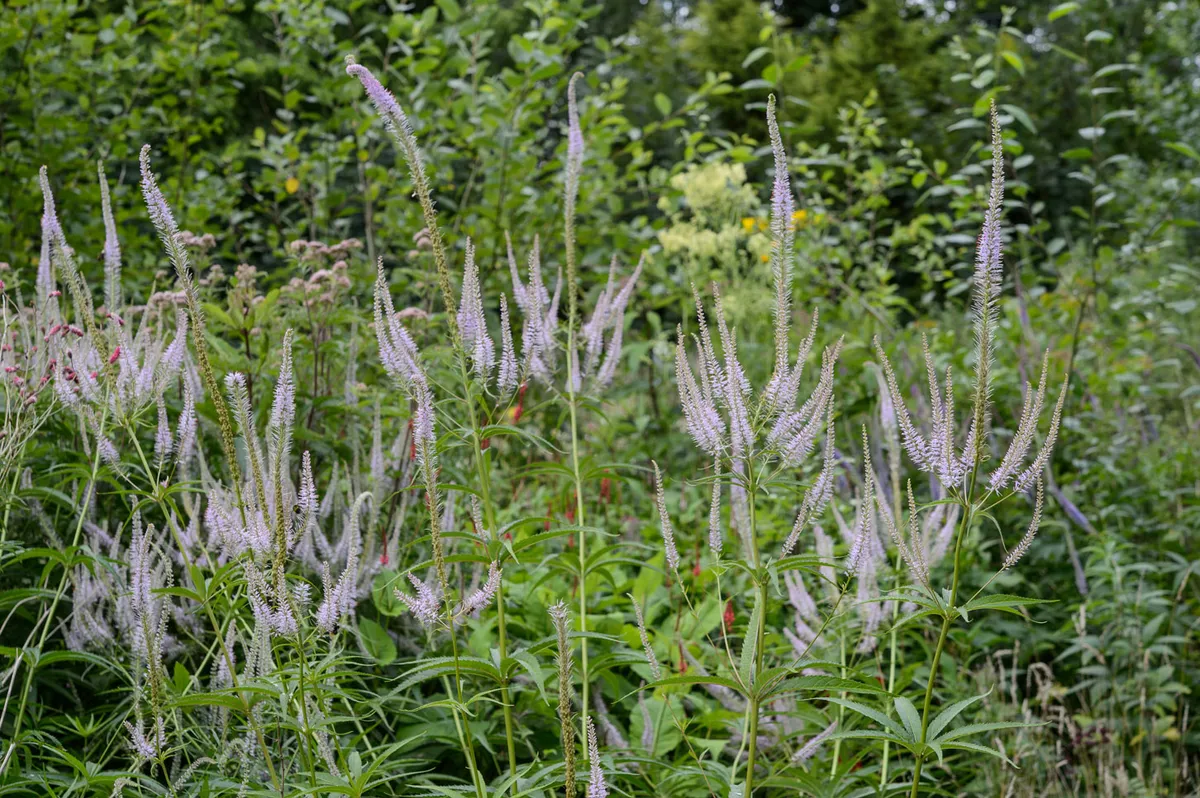
Long spires of lavender flowers appear in June and July on this tall perennial. Useful for vertical accents in a border, it is beloved by bees, hoverflies, moths, butterflies and more. Leaves a graceful skeleton through the late summer months. Find out how to grow veronicastrums.
Lavender
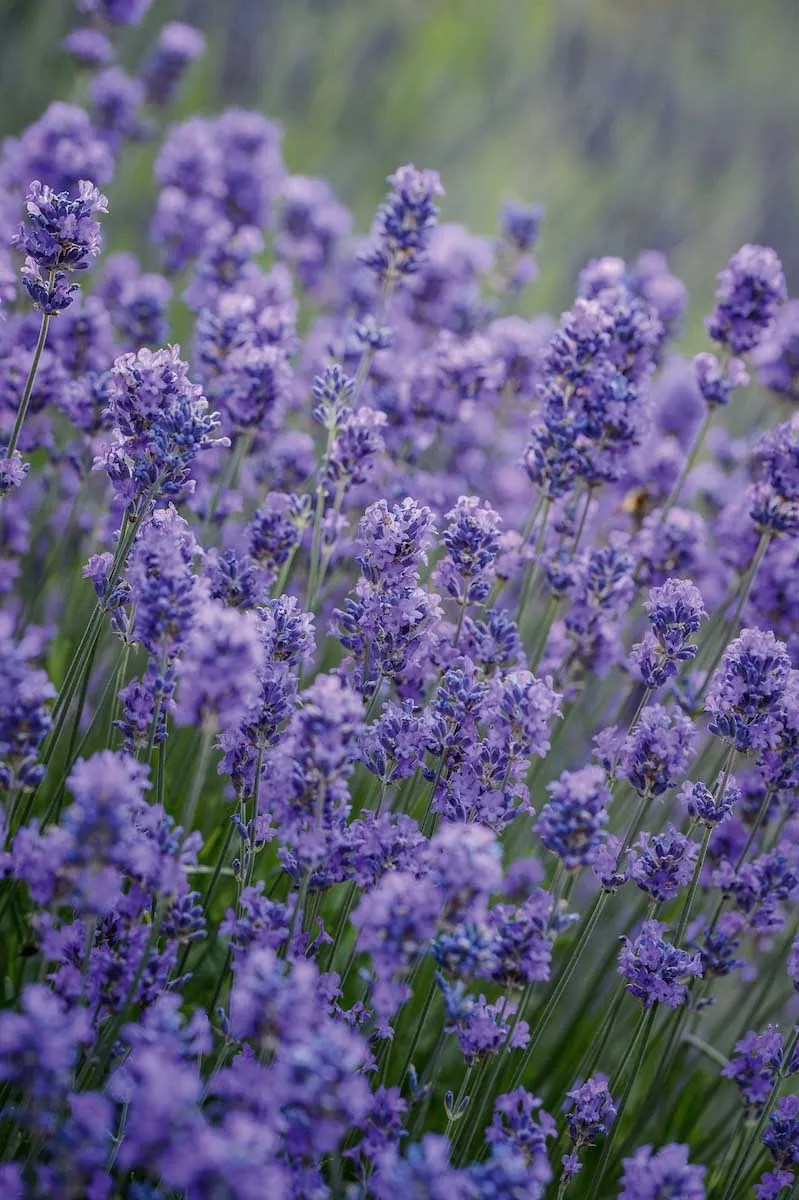
Lavenders buzz with bees when in flower, and offer abundant nectar. Grow it at the front of a sunny border, in a gravel garden or as a low-growing hedge. Grow Lavandula x intermedia or Lavandula angustifolia. Read more about growing lavender.
Borage
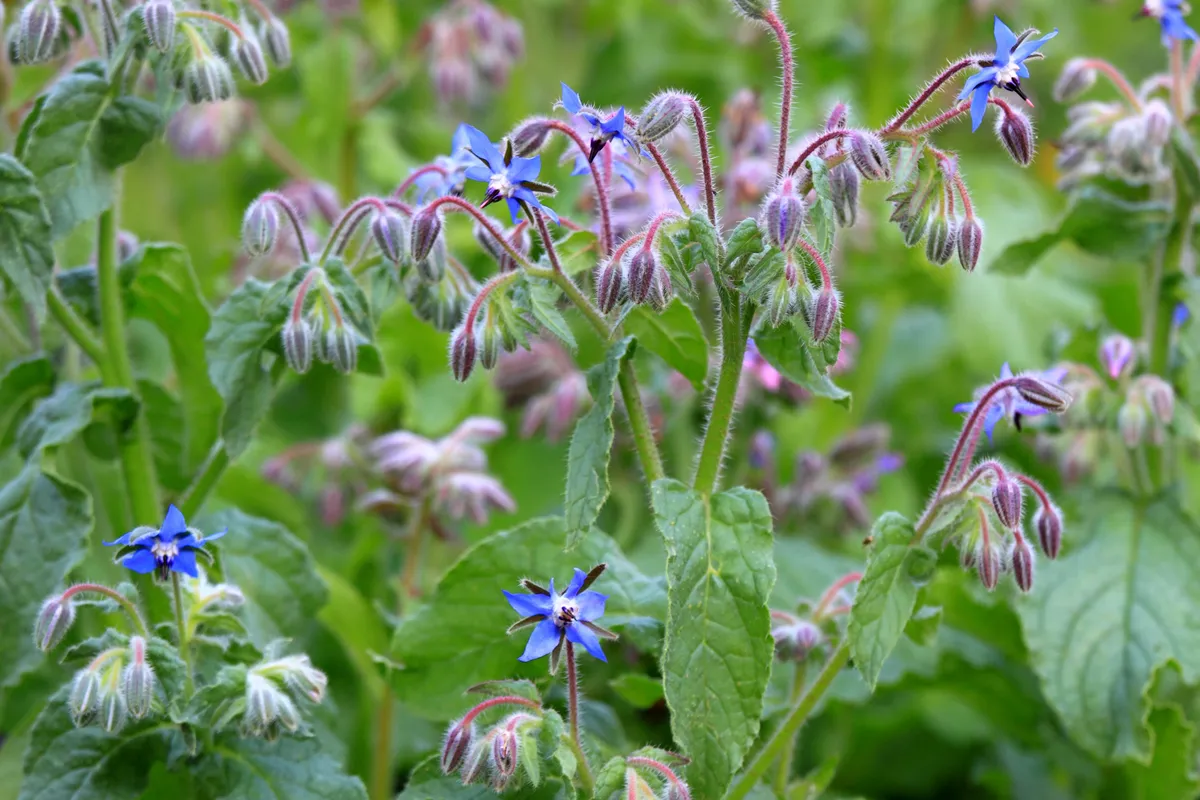
The flowers of borage refill with nectar in just two minutes, making them extremely valuable to bees. The flowers are edible, and look attractive floating in a glass of Pimm's or as a garnish to a cake. Borage self seeds readily around the garden.
Verbena
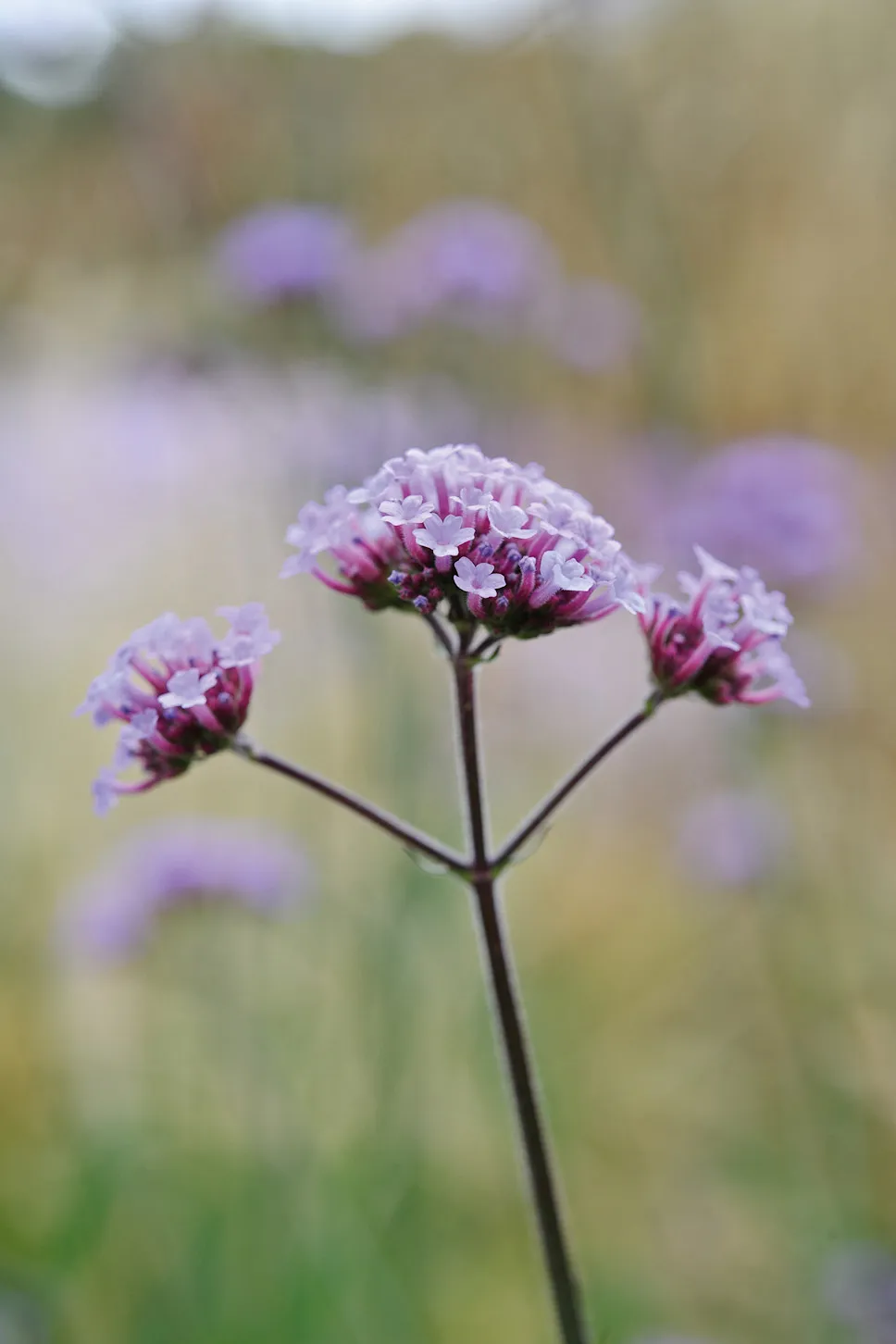
Verbenas flower over many months, from summer into autumn, so provide nectar for bees and other pollinators over a long period. Verbena bonariensis can reach 2m and is light and airy, while other types are more compact. Grow in a sunny spot in well drained soil. Read our expert guide to growing verbena.
Echinacea

The fabulous daisy-like flowers of echinacea are popular with bees, as well as butterflies.They come in a wide range of colours including pink and white. Birds are attracted to the seedheads.
Salvias
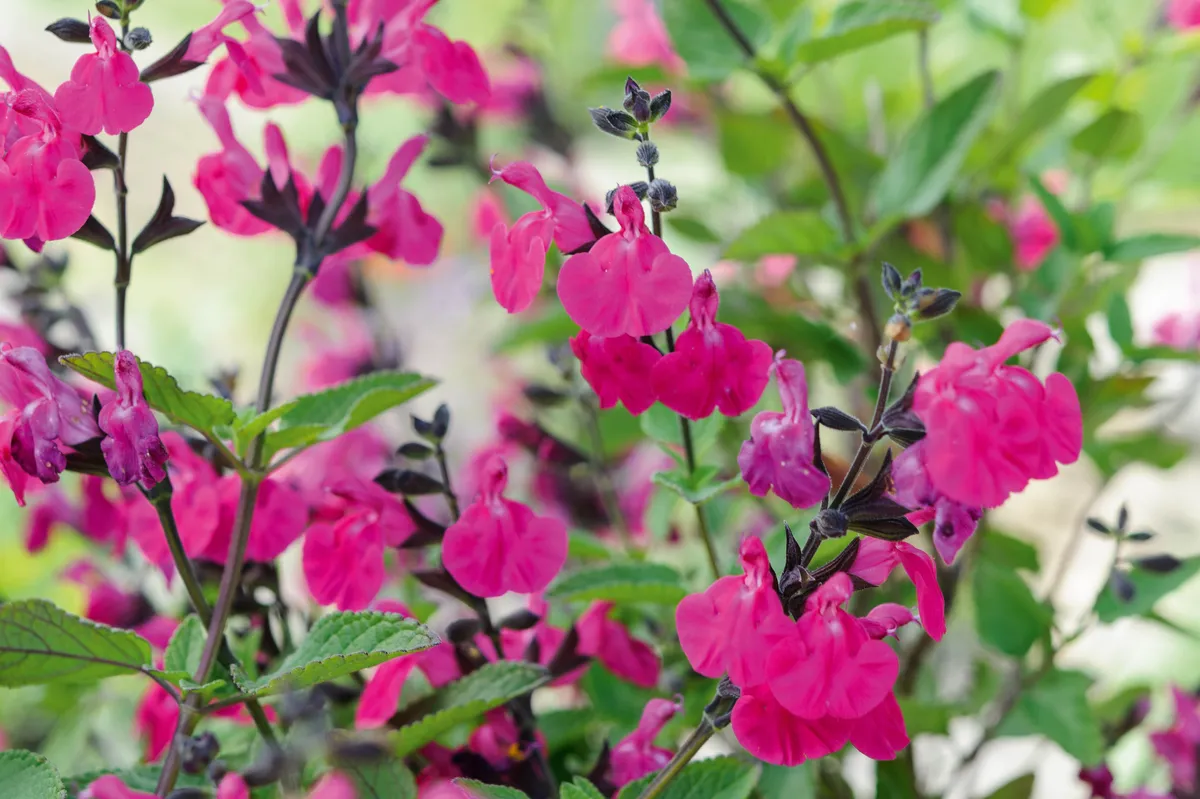
Salvias are drought tolerant and flower for an incredibly long time over summer and well into autumn. Their lipped flowers come in many colours, including blue, purple, scarlets, pale pink, bright magenta. All salvias have nectar-rich flowers that are loved by bees. Grow in a sunny border or in a pot. Read our expert guide to growing salvias.
Agastache
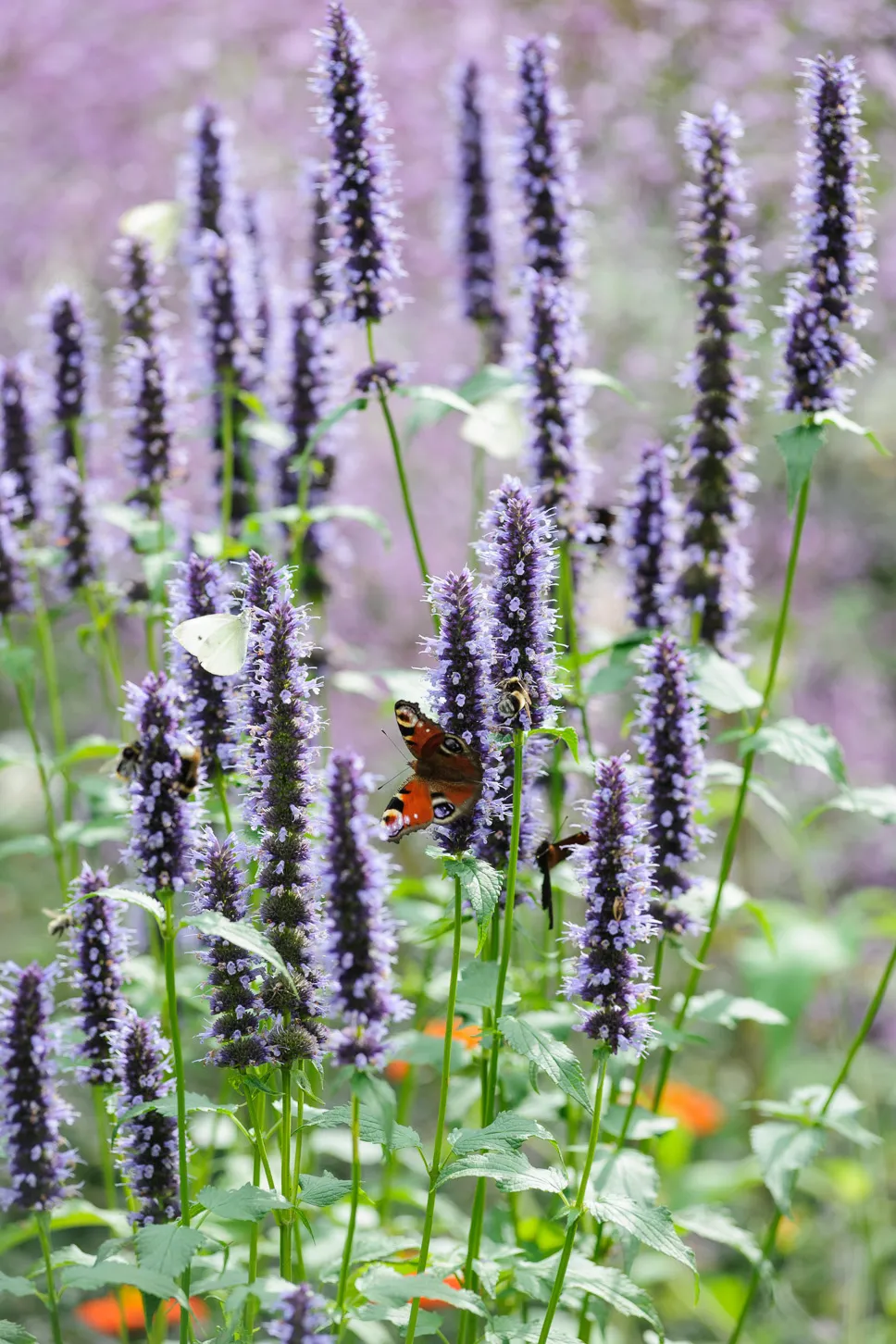
Bees adore the violet blue flowers of agastache (also known as Korean mint or giant hyssop). Agastache flowers from July to October and is a good way of adding height to a sunny border.
Globe thistle
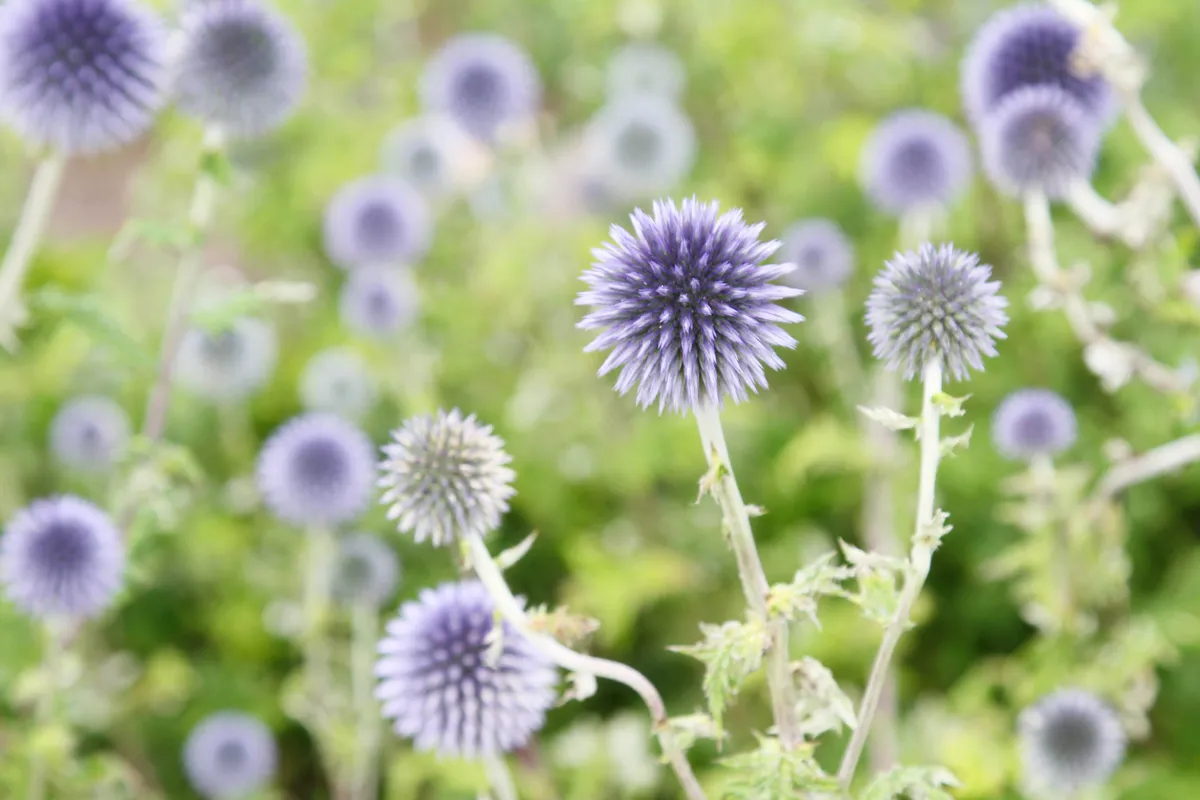
The vibrant blue globes of Echinops ritro (globe thistle) are magnets for bees. These tall plants are best grown at the back of a sunny border, in free-draining soil. Birds will feed on the seedheads.
Scabious (pincushion flower)

The pincushion flowers of Scabiosa are loved by bees. They can be annual or perennial, in shades of blue, white, burgundy and lemon.
Teasel

Teasels are fabulous plants for wildlife and attract many different bee species, including bumbleebees - they can roam the densely packed florets to easily access nectar and pollen. Teasels are tall biennials that are best grown at the back of a border. They self seed readily, so you will never be without them in your garden.
Thyme
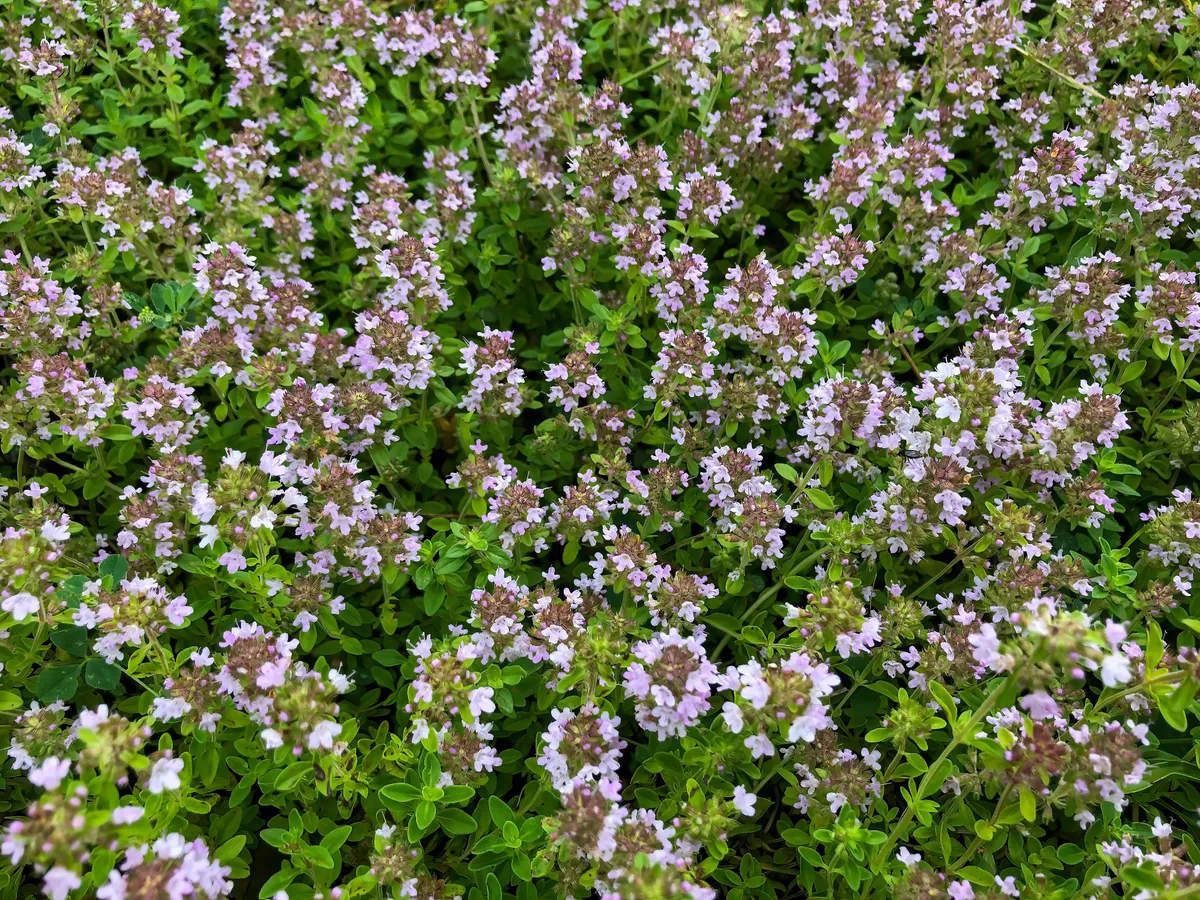
There are many types of thyme, both wild and cultivated, which buzz with honeybees and bumblebees as well as other pollinators. Grow it in a pot, in a herb border or at the front of a border.
Linaria purpurea
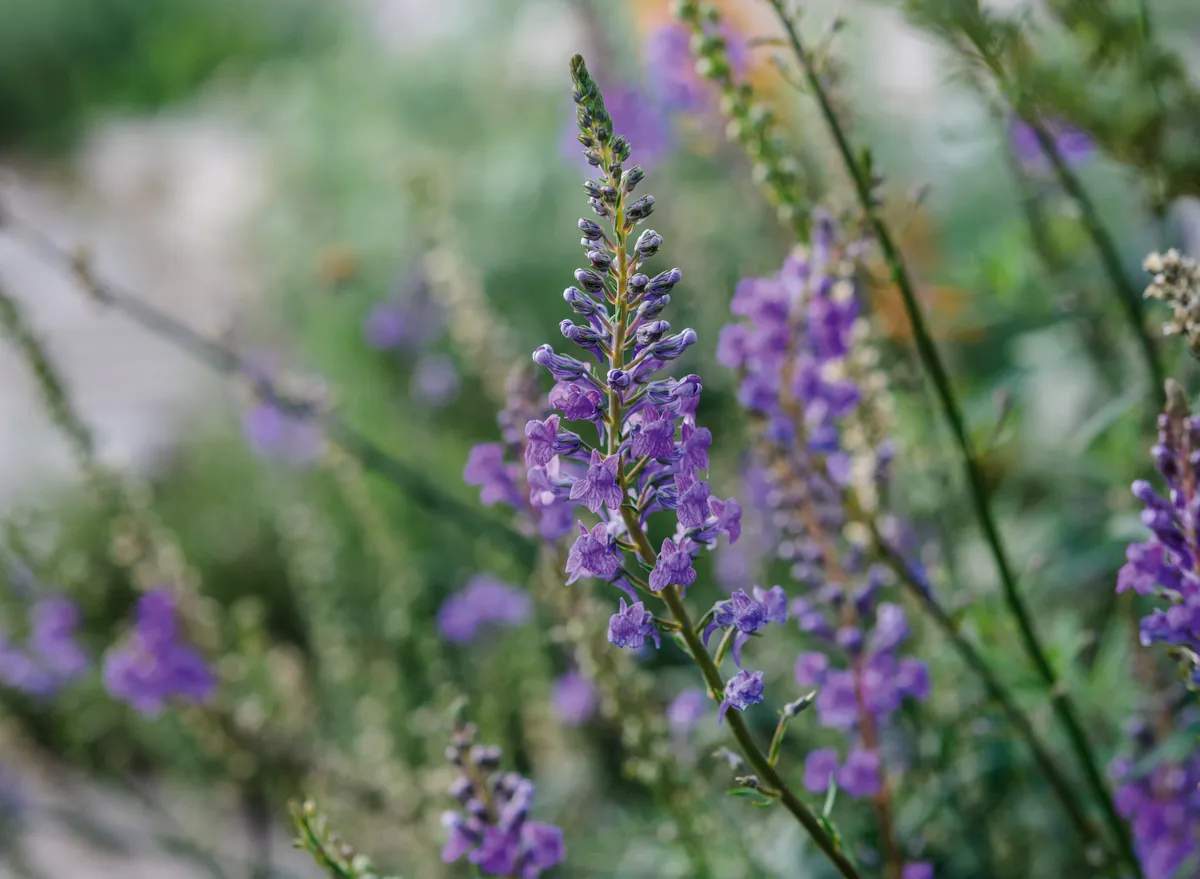
A British native with spires of purple flowers for many months. It seeds freely in disturbed or stony soils and is a cafeteria for bees and hoverflies. Try Linaria purpurea ‘Canon Went’ (soft pink) and Linaria purpurea ‘Springside White’ (pristine white).
Viper's bugloss

The nectar-rich flowers of Echium vulgare are popular with bumblebees and bees of all kinds. It flowers from June to September. Grow in very well drained soil or a gravel garden.
Eryngium
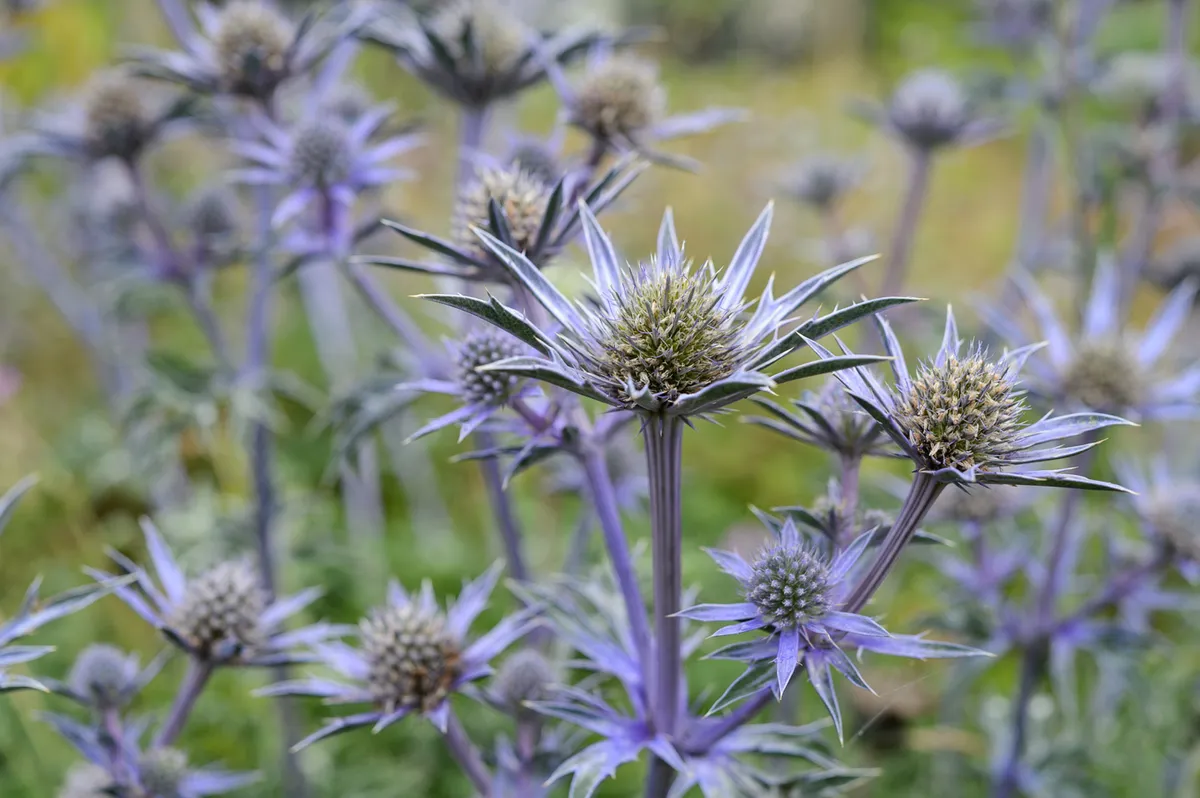
This prickly character is a member of the cow parsley tribe. It grows best in full sun with good drainage. Beloved by wildlife and beneficial insects, especially bumblebees. It flowers in summer then leaves an elegant skeleton and plenty of seeds for hungry birds. Don't miss our guide to growing eryngium.
Best flowers for bees in autumn
Sunflowers

The huge, dinner-plate like flowers of sunflowers are abuzz bumblebees and honeybees when in bloom - and of course, birds feast on the seedheads. Find out how to grow sunflowers, plus the best varieties to grow.
Japanese anemone

Japanese anemones flower between June and October, in shades of mostly white and pink. Their open flowers are Read our guide to growing anemones.
Dahlia
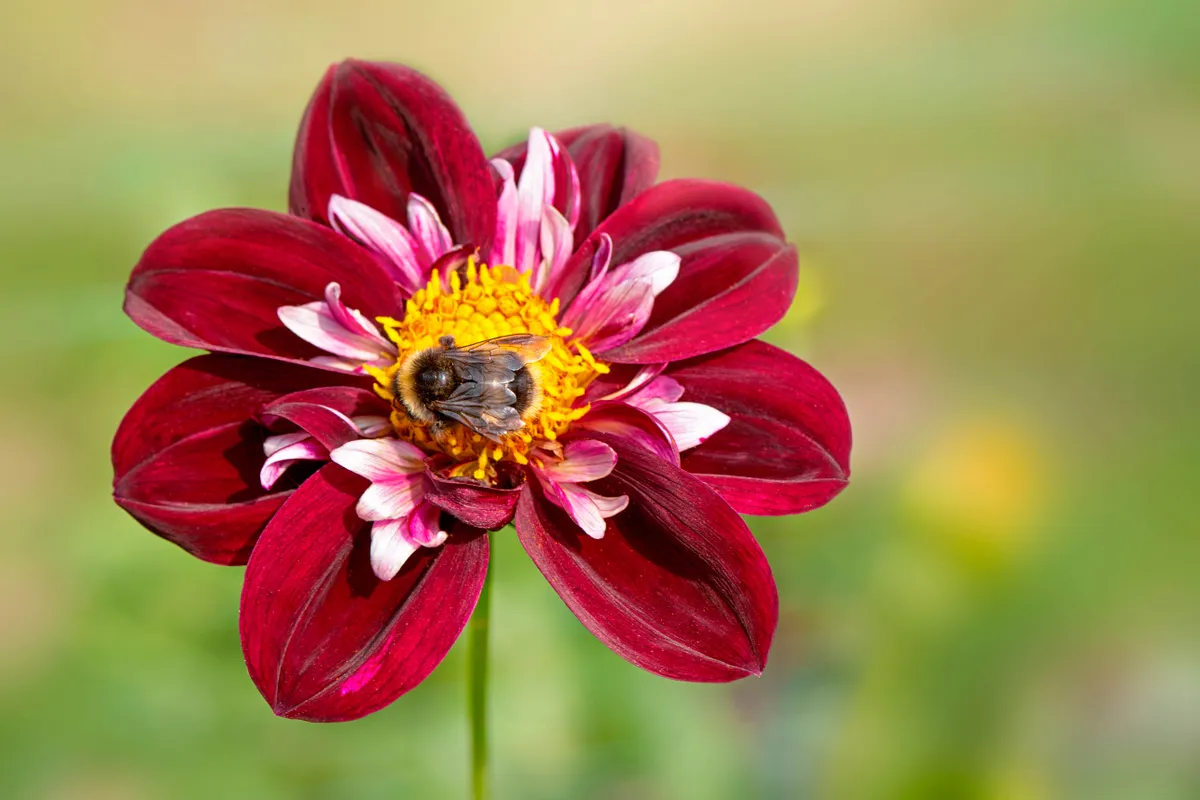
Dahlias flower for an incredibly long time, from summer to the first frosts if regularly deadheaded. Only certain types are good for bees, however - the single flowered varieties such as 'Bishop of Llandaff', collarette varieties such as Dahlia 'Mary Evelyn' and anemone types such as 'Blue Bayou'.
Aster
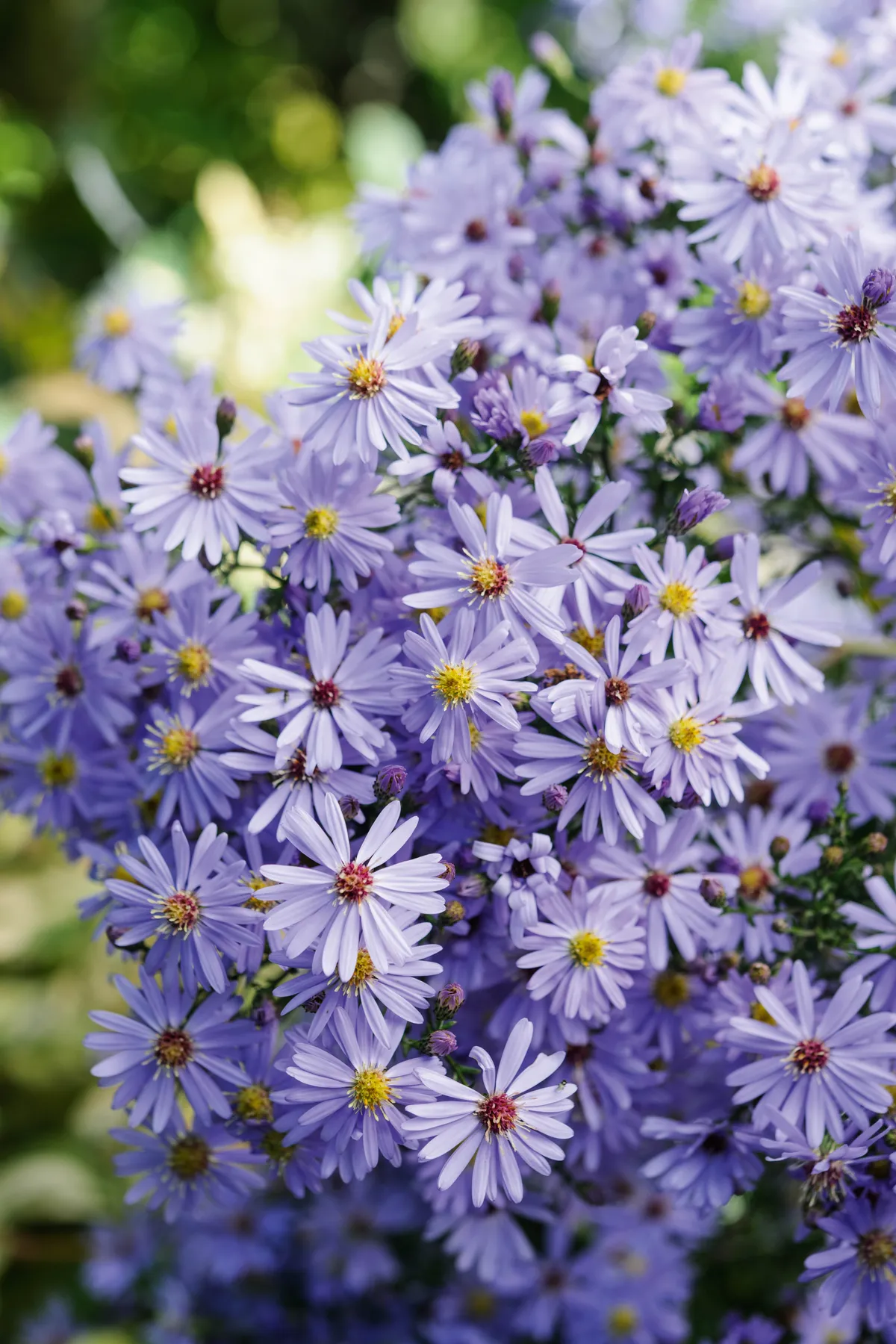
Asters (now mostly known as Symphyotricum) are stalwarts of the autumn border, with masses of daisy-like flowers that bees love in shades of blue, white and pink.
Discover the best small-flowered asters to grow.
Sedum
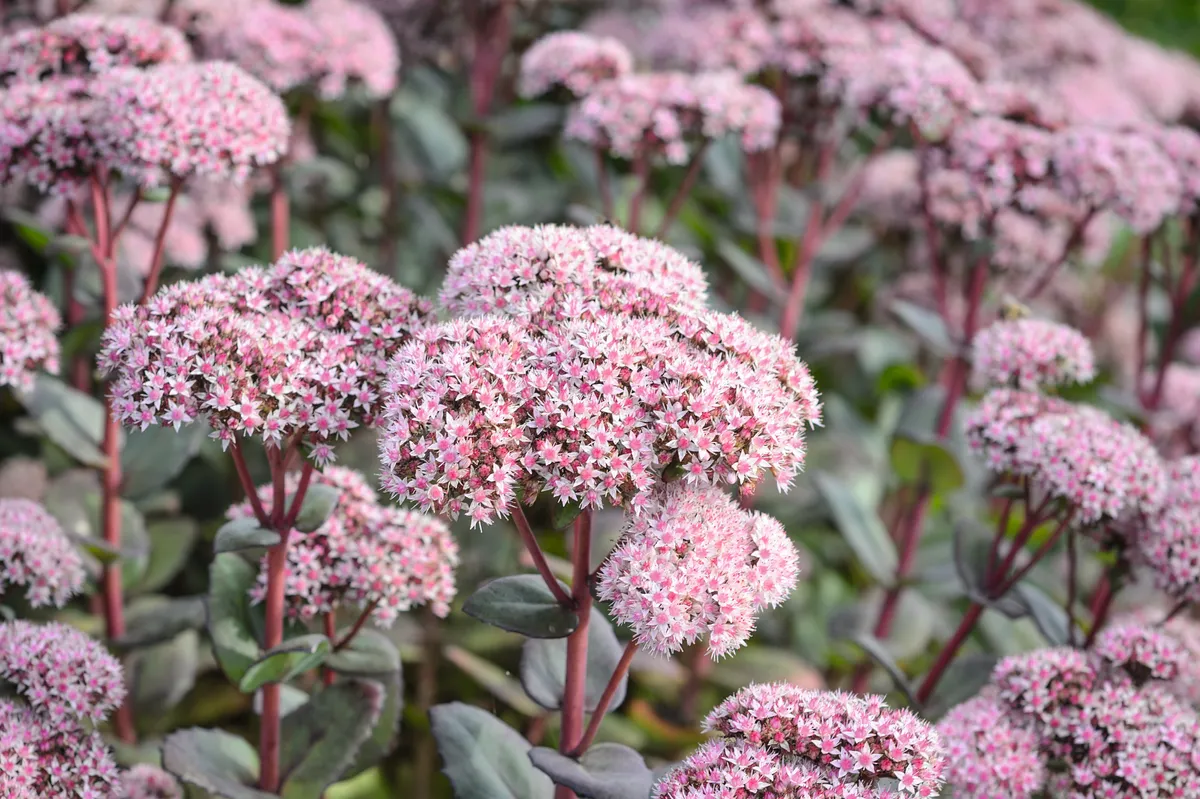
The flat flowerheads of sedums (now known as hylotelephium) are attractive to all kinds of pollinators and are especially attractive to male bumblebees. Grow at the front of a sunny border in well drained soil.
English ivy
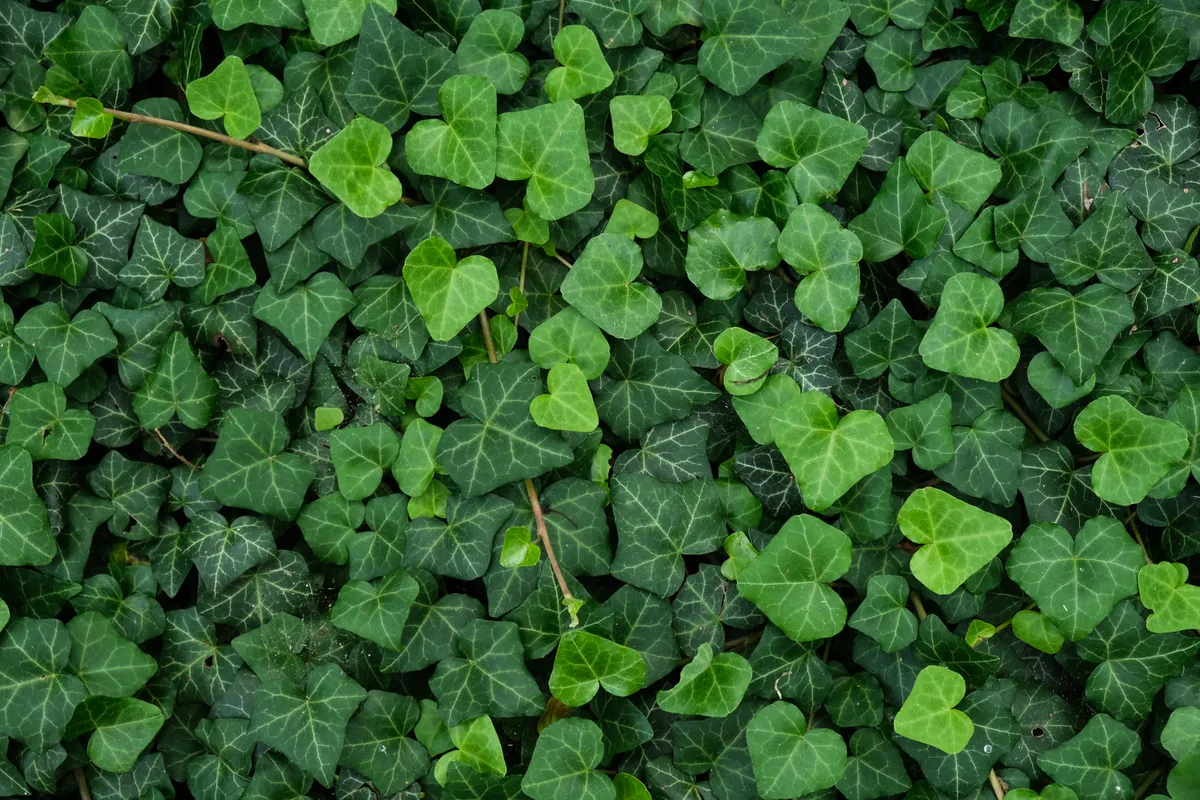
English ivy is grown for its attractive evergreen foliage but its creamy-white, globe-shaped flowers flowers, which appear late in the year, are a very important source of nectar and pollen for late bees and other pollinators. Grow up a fence or wall.